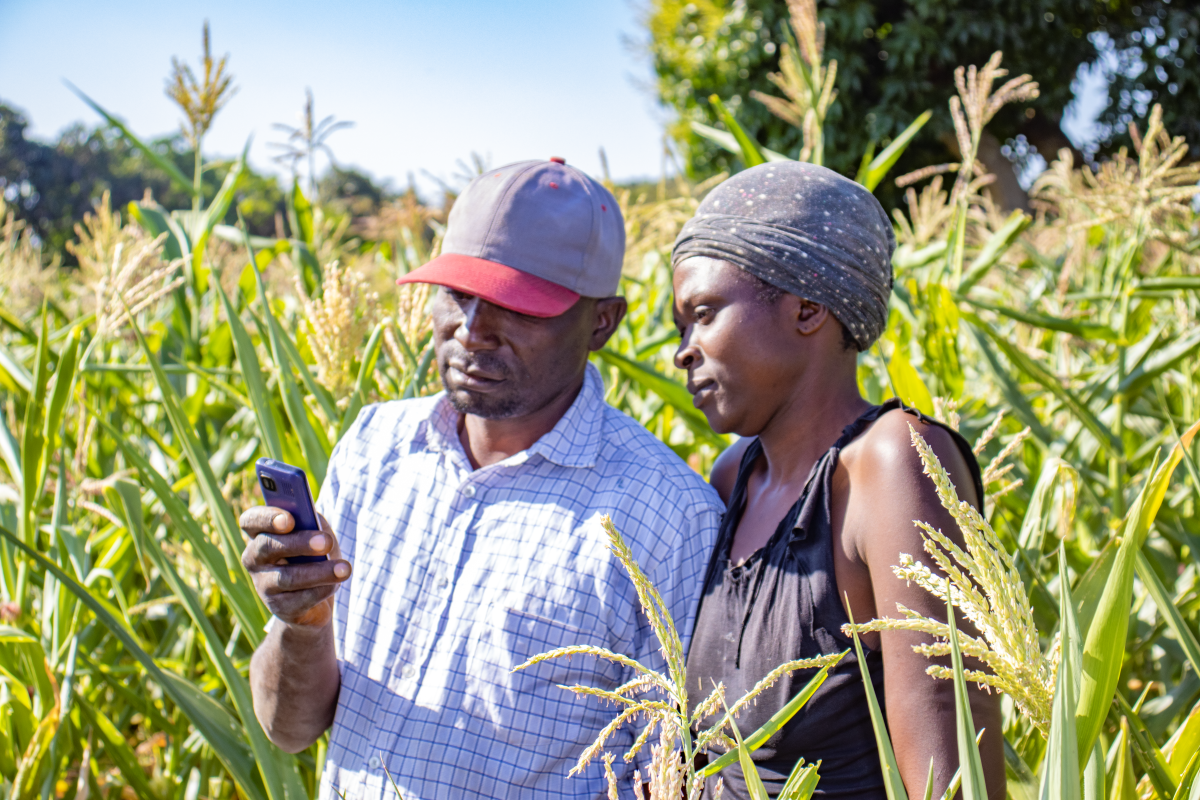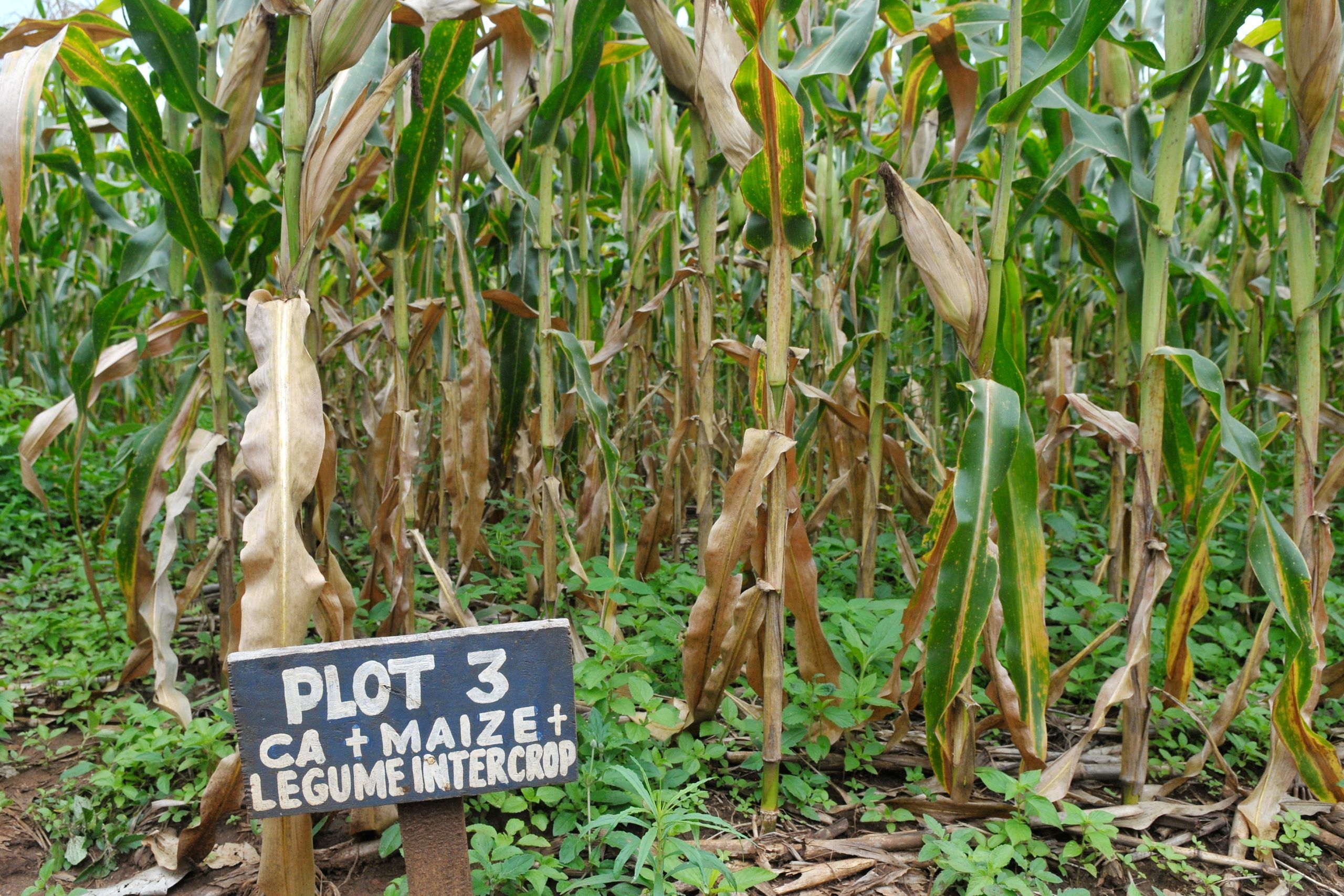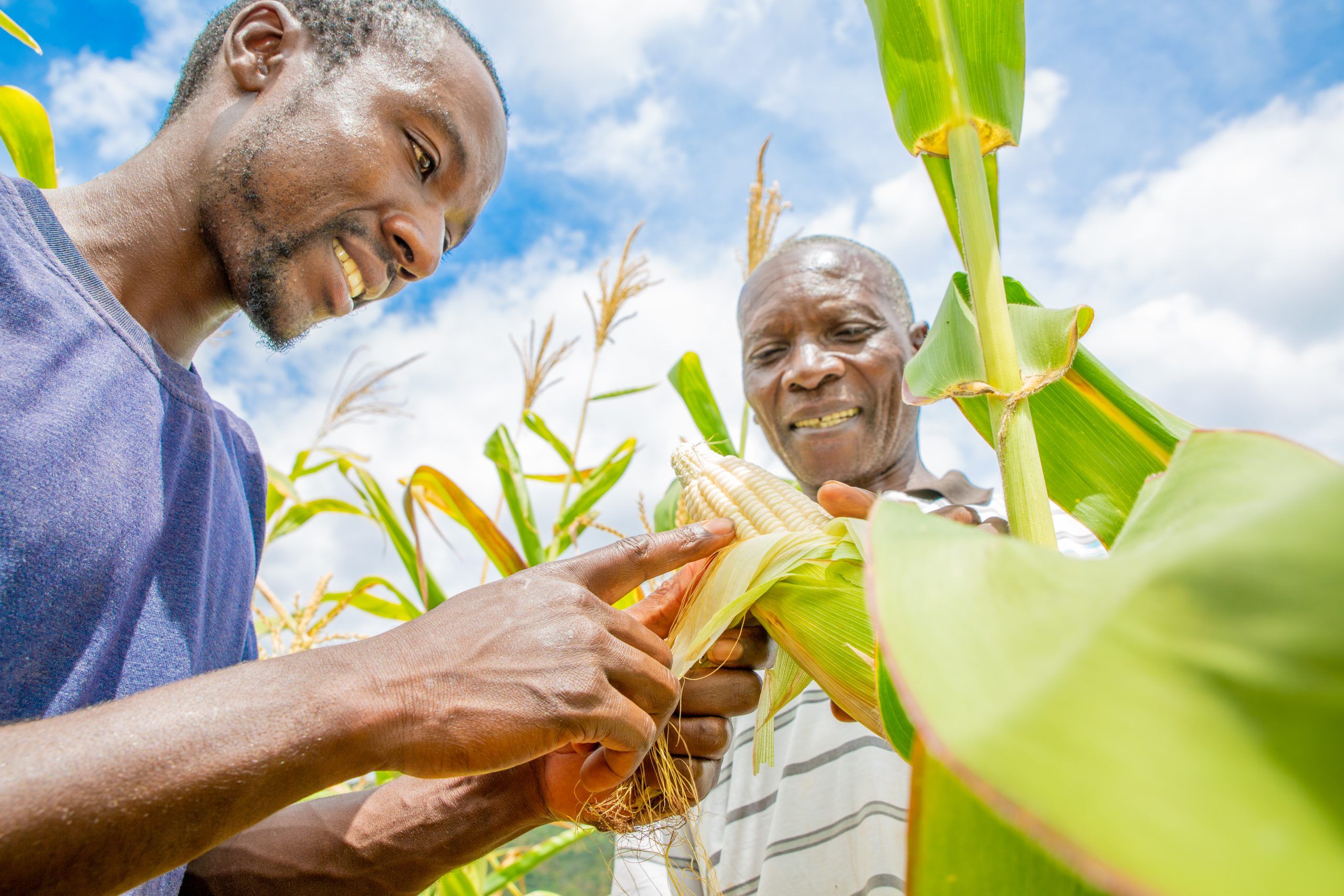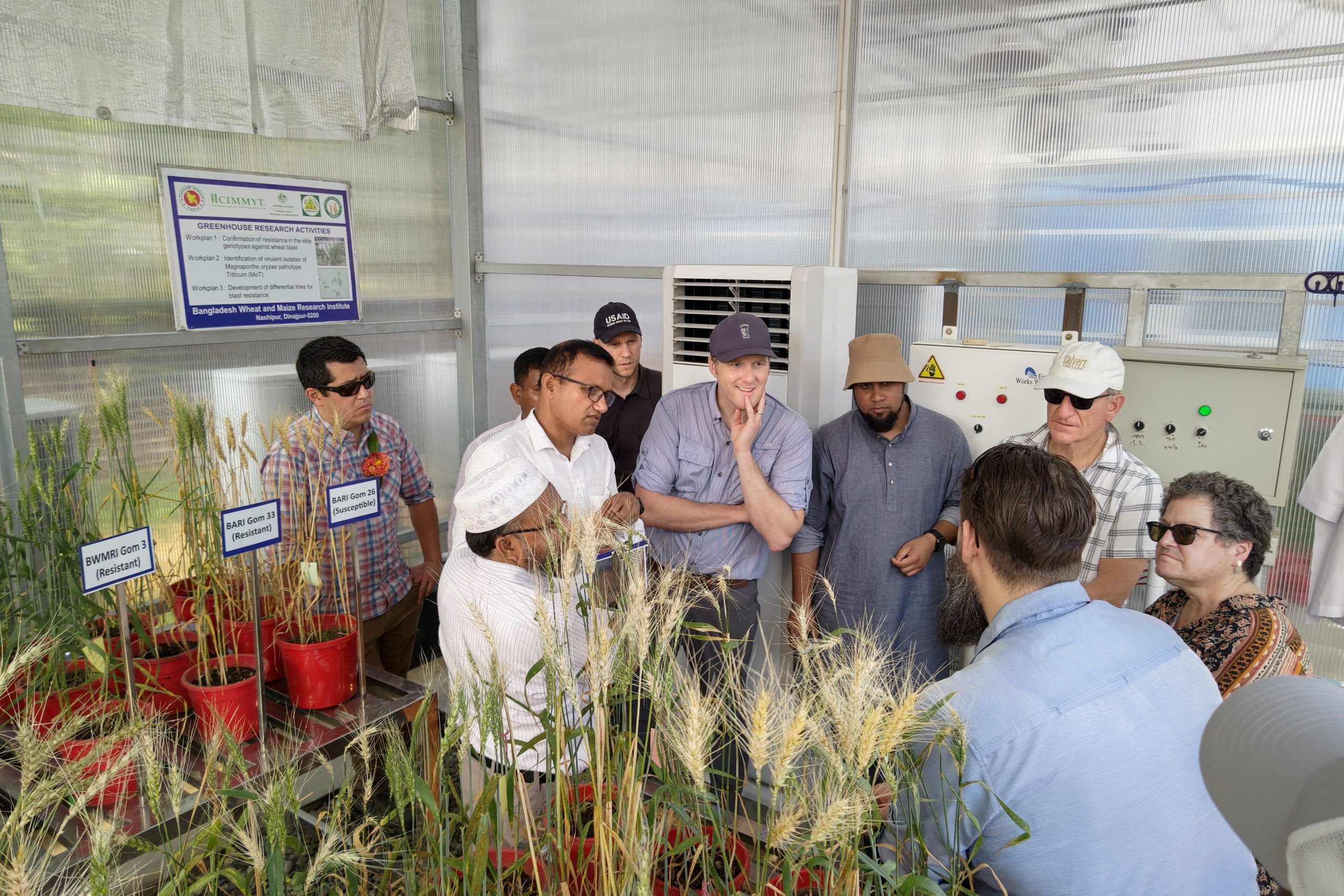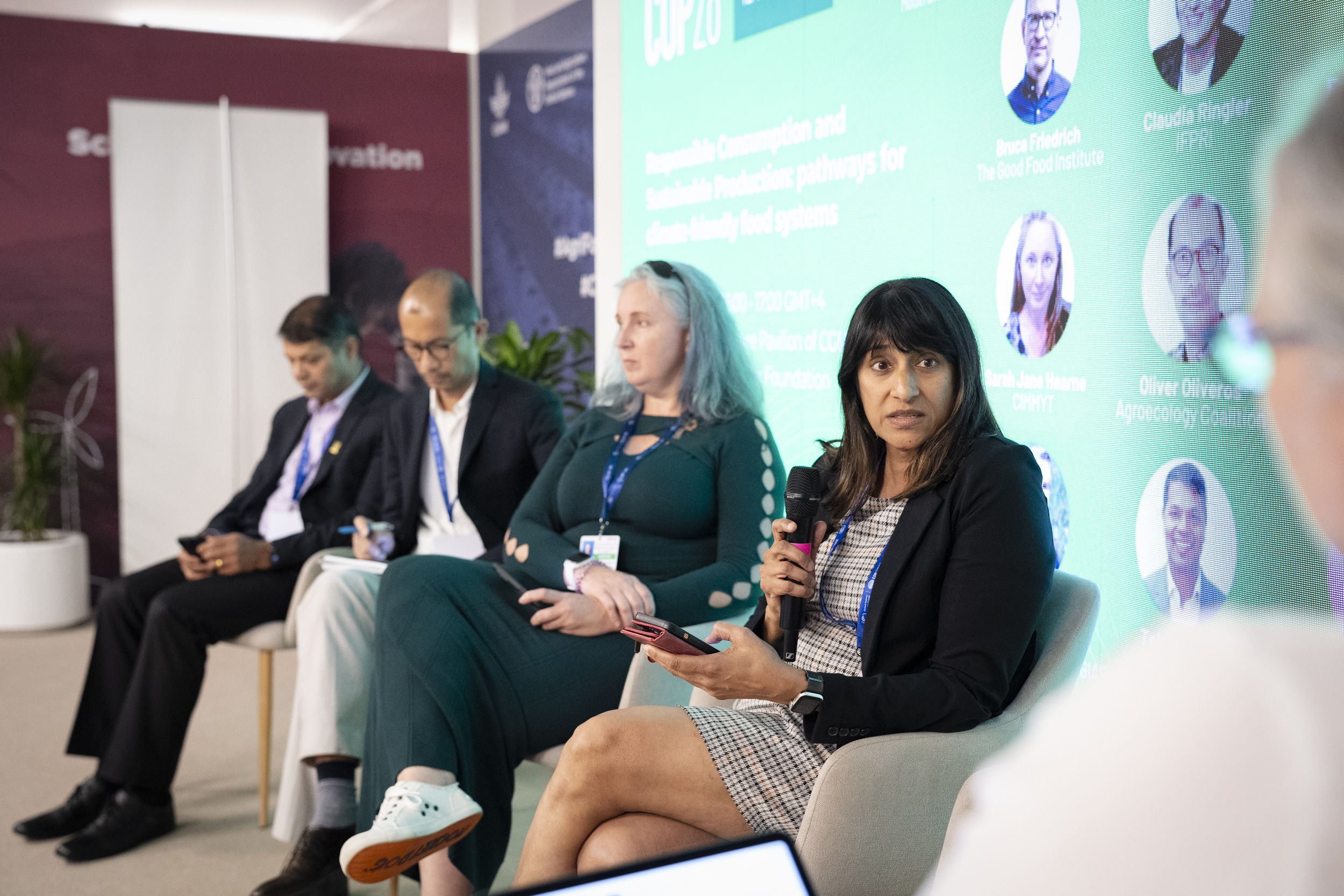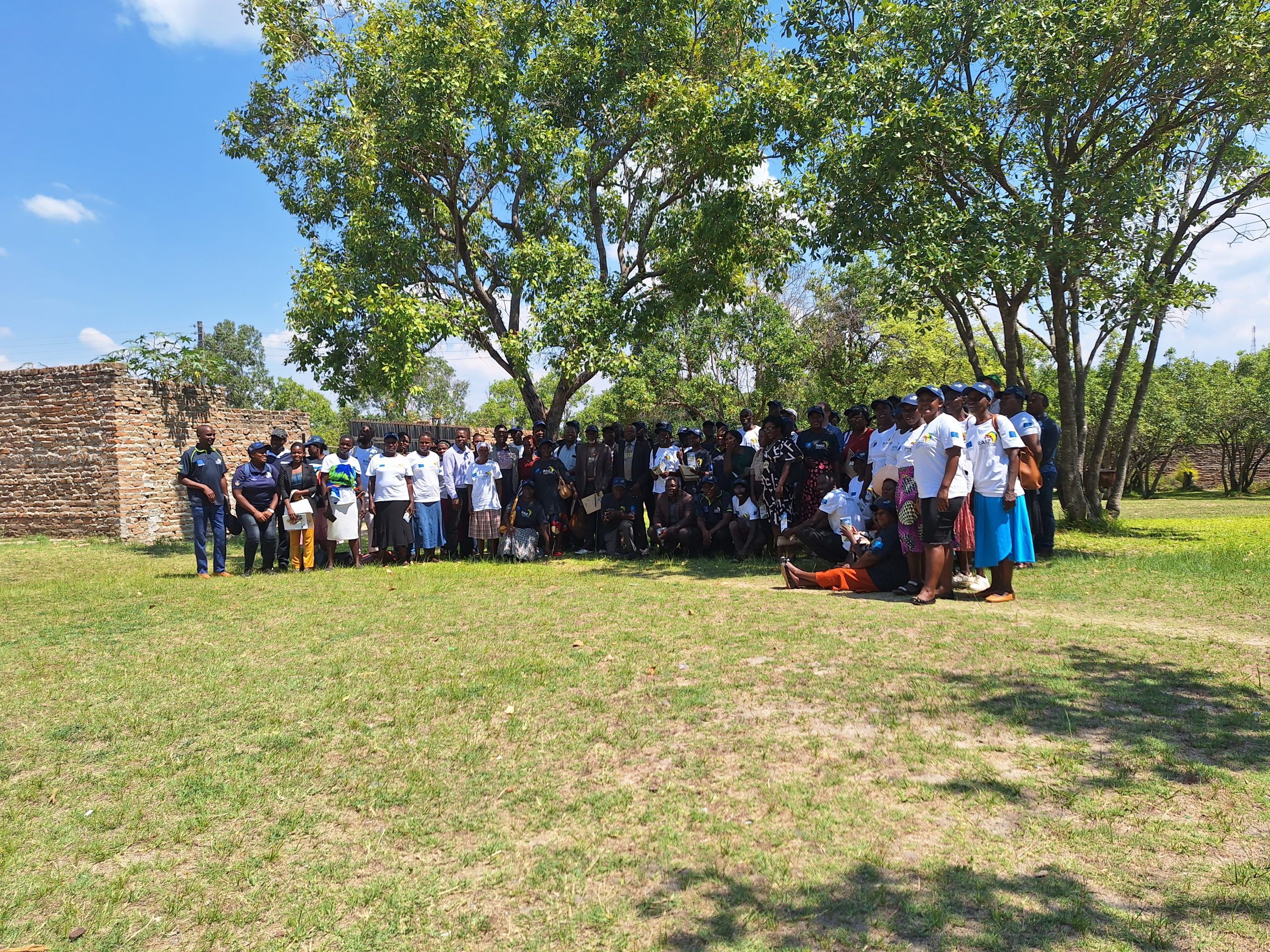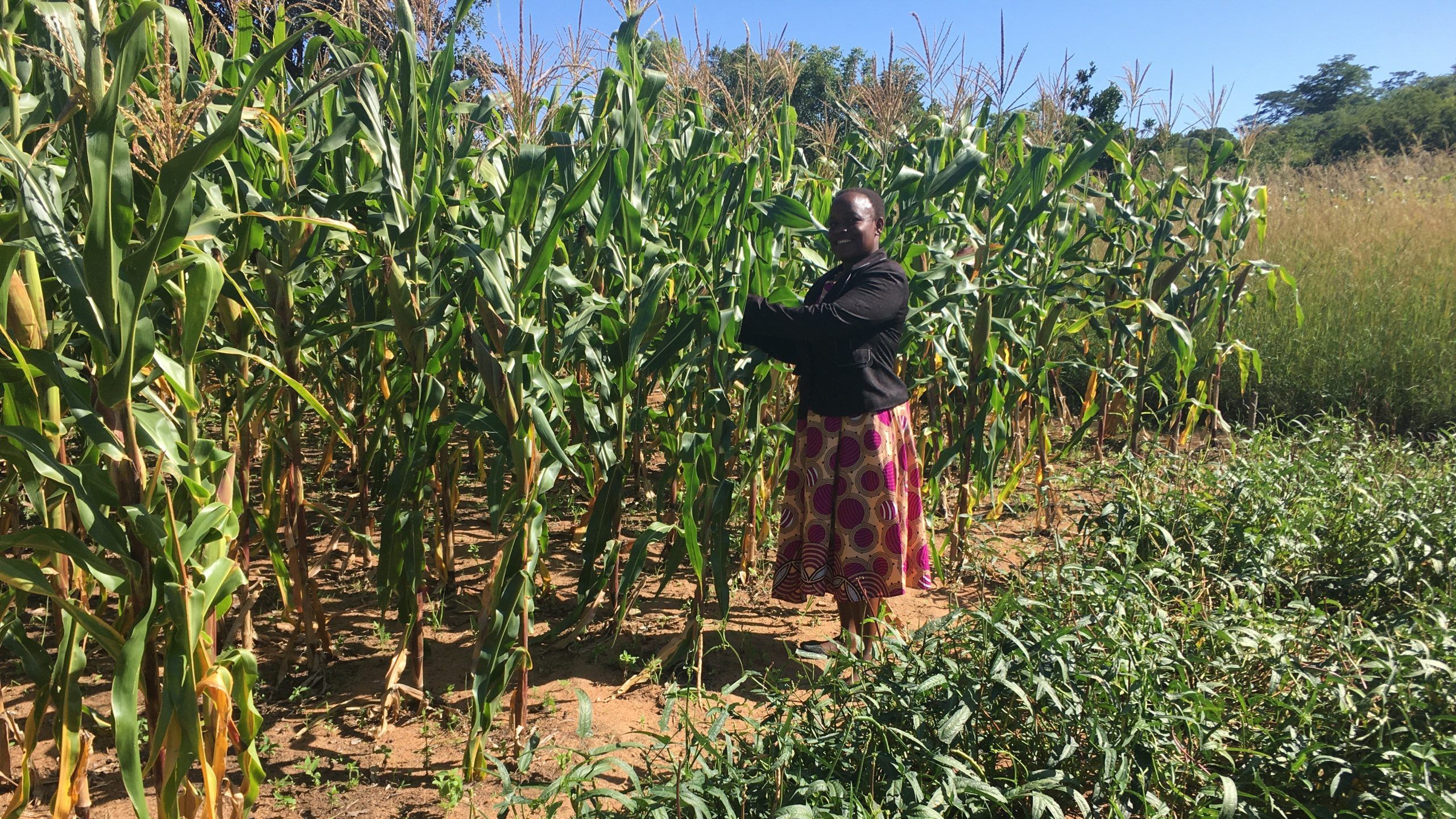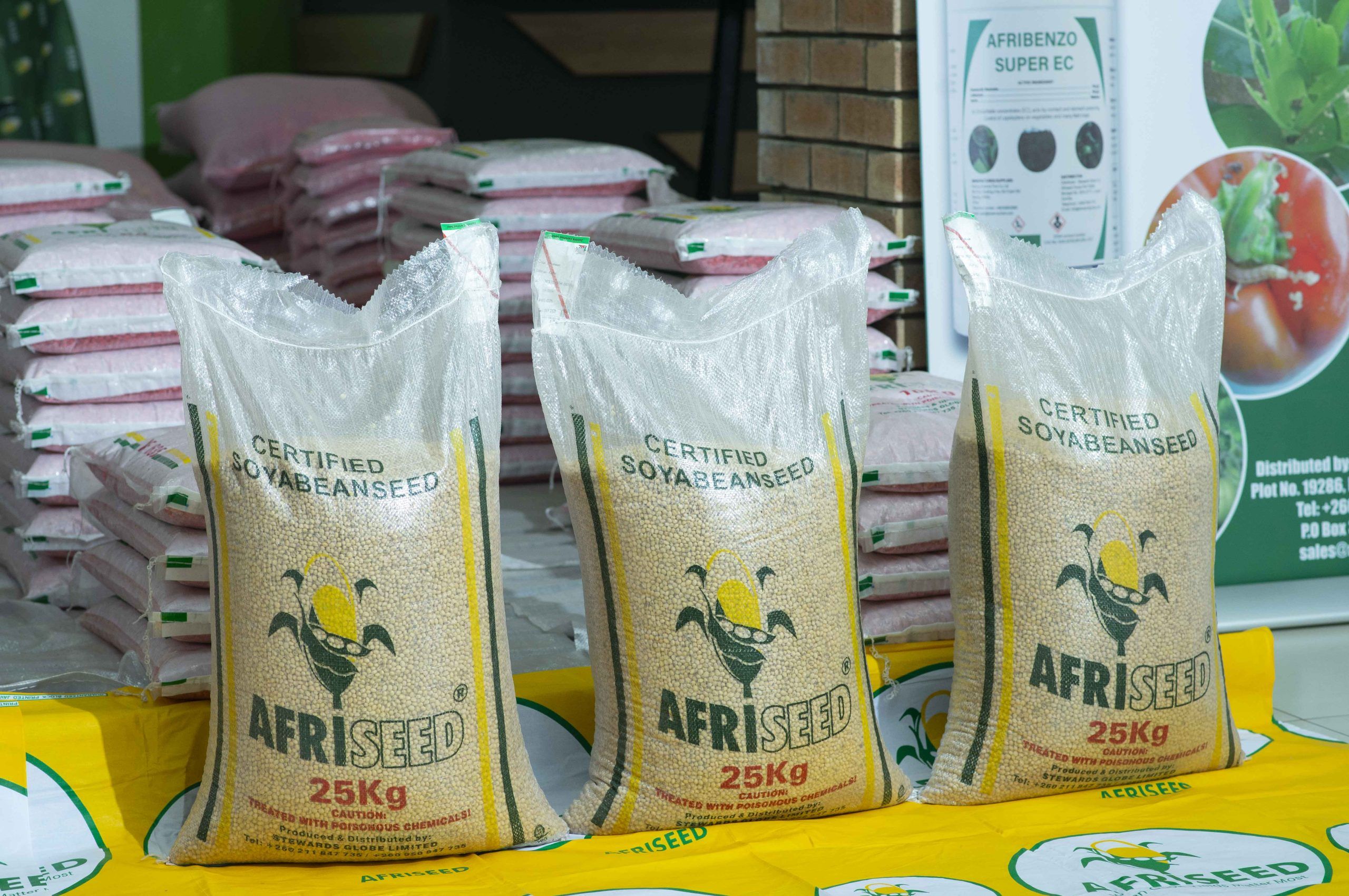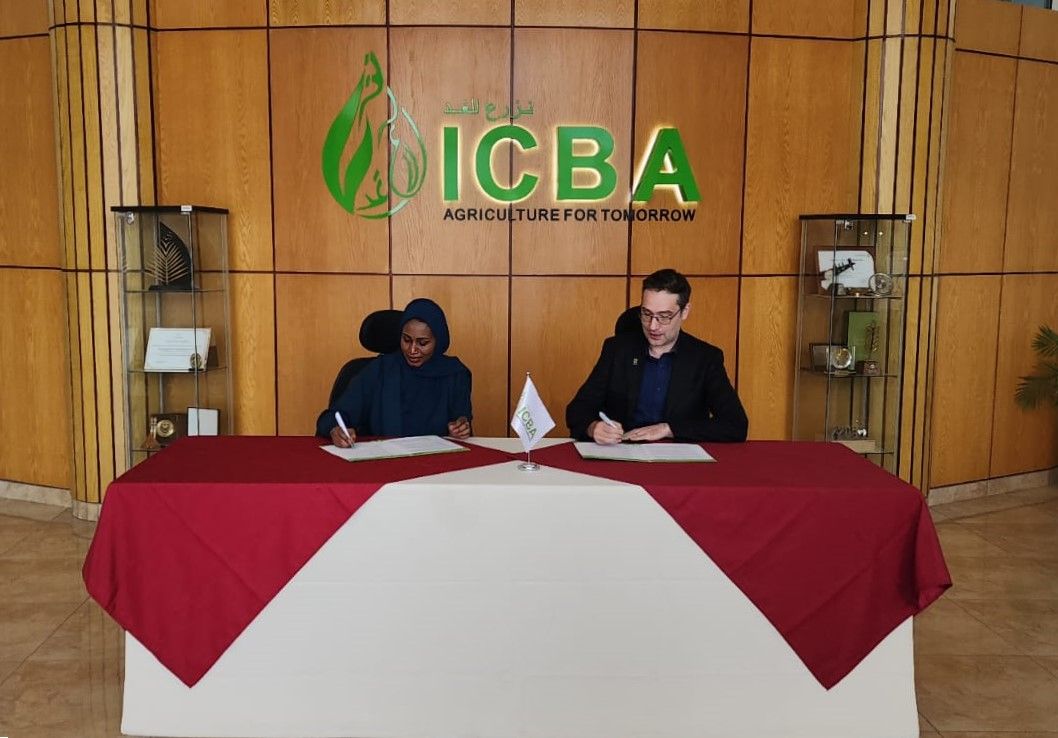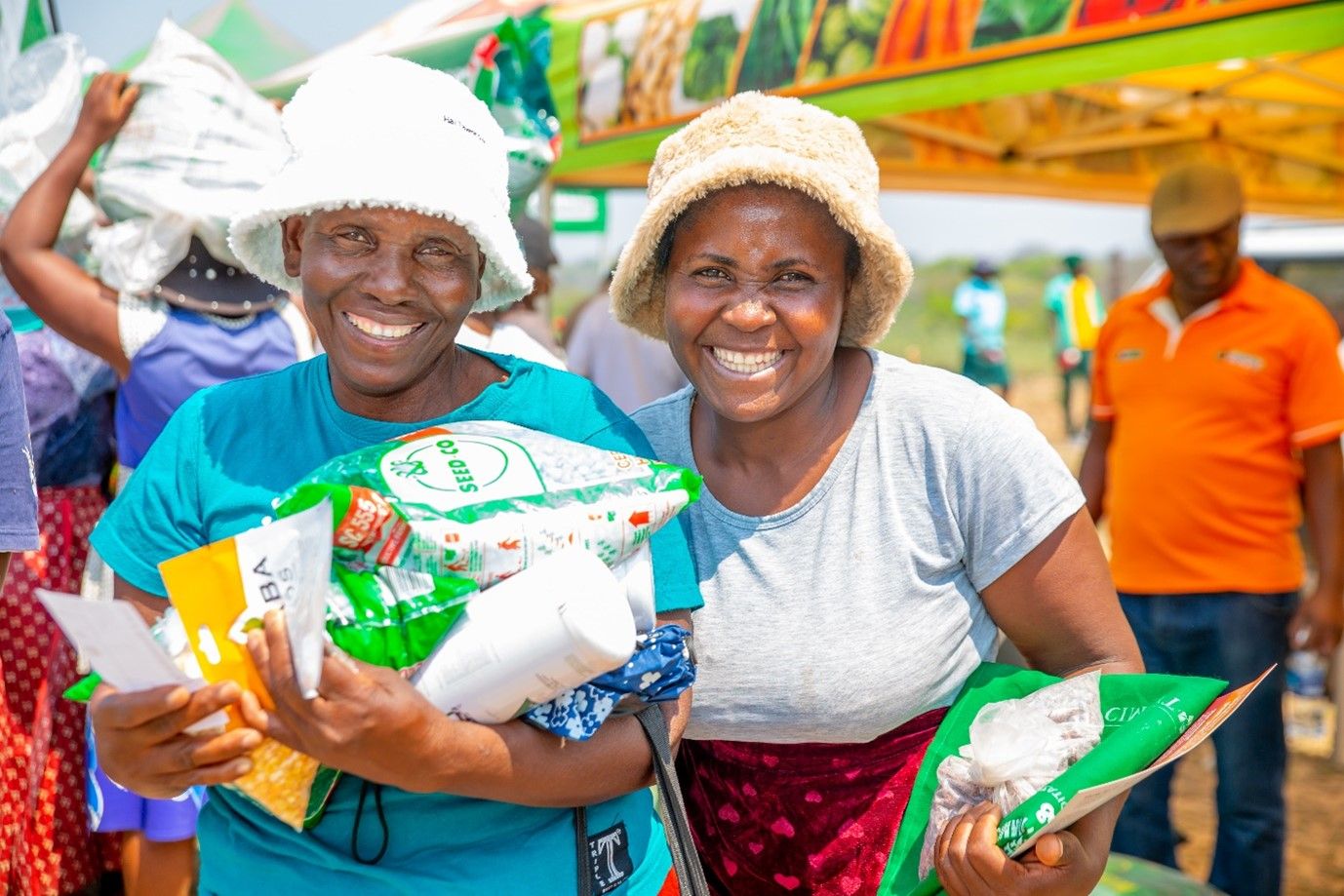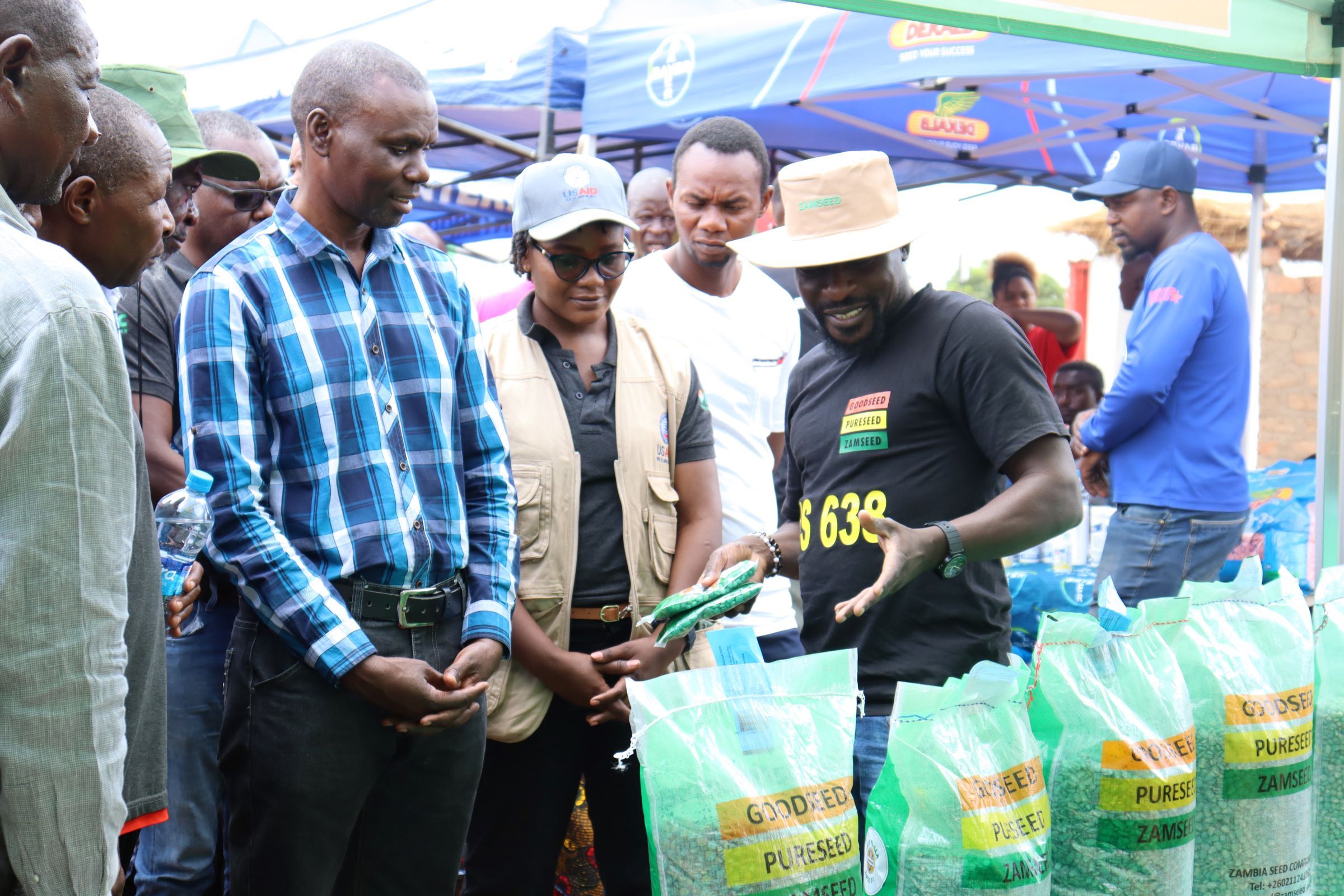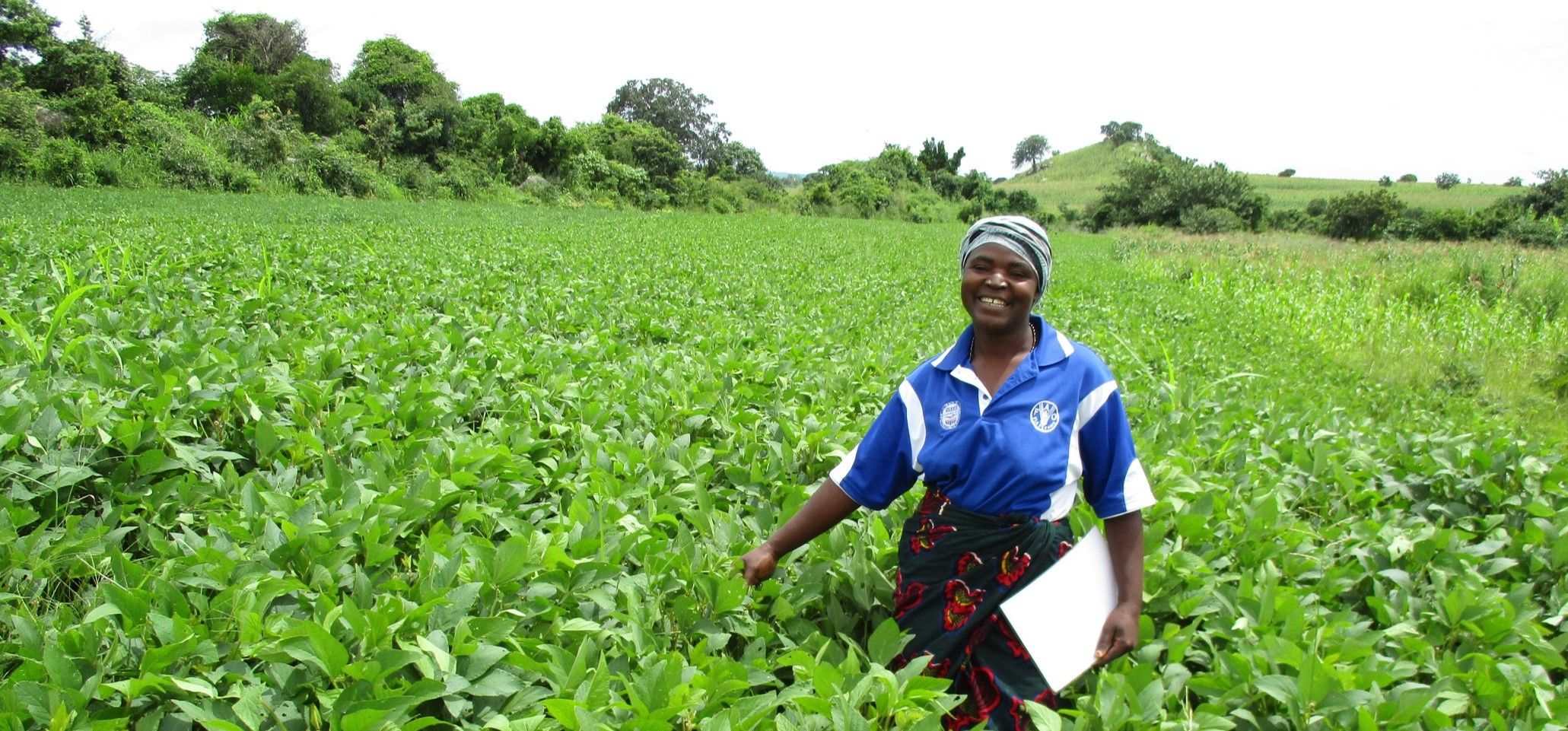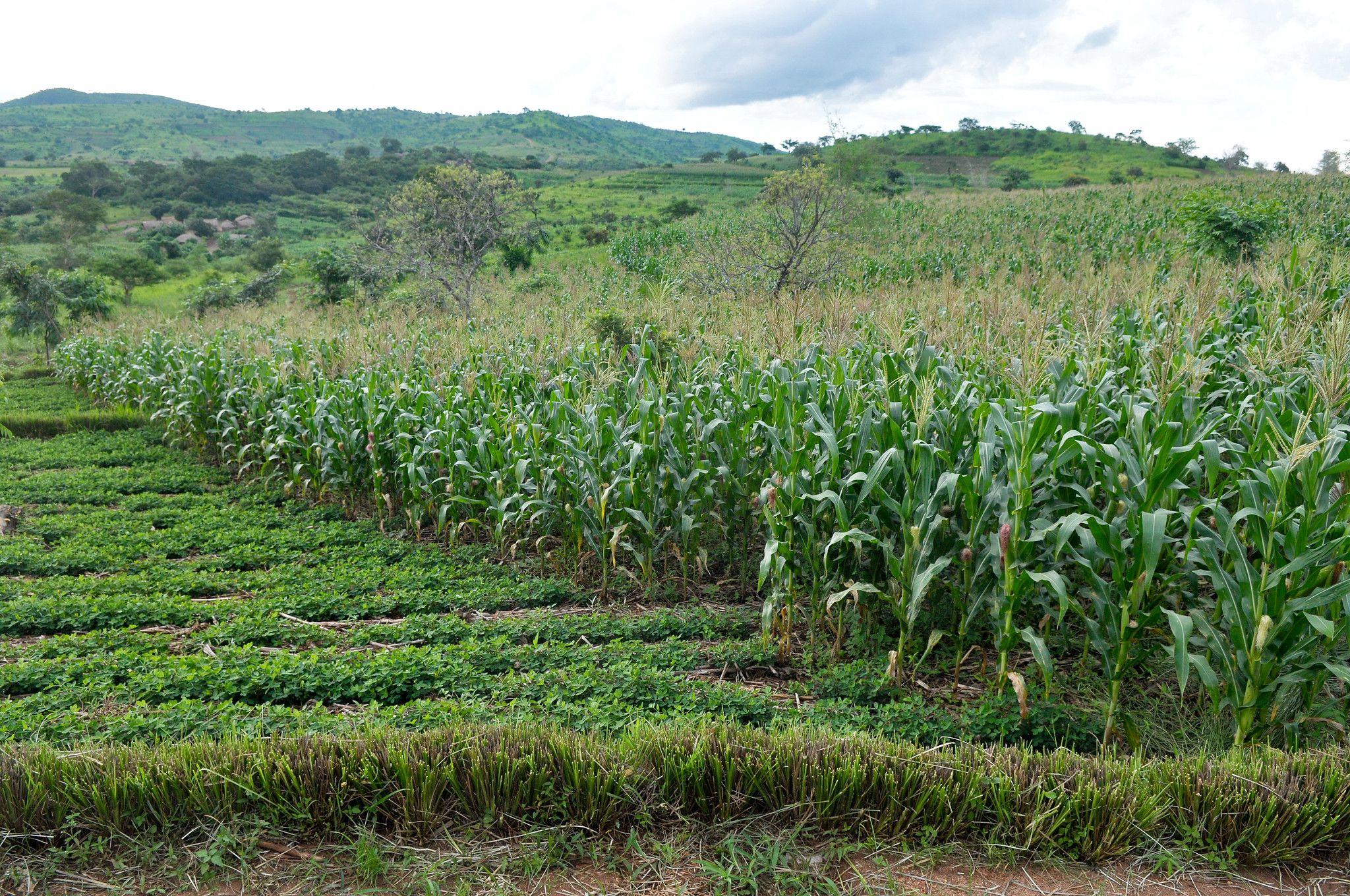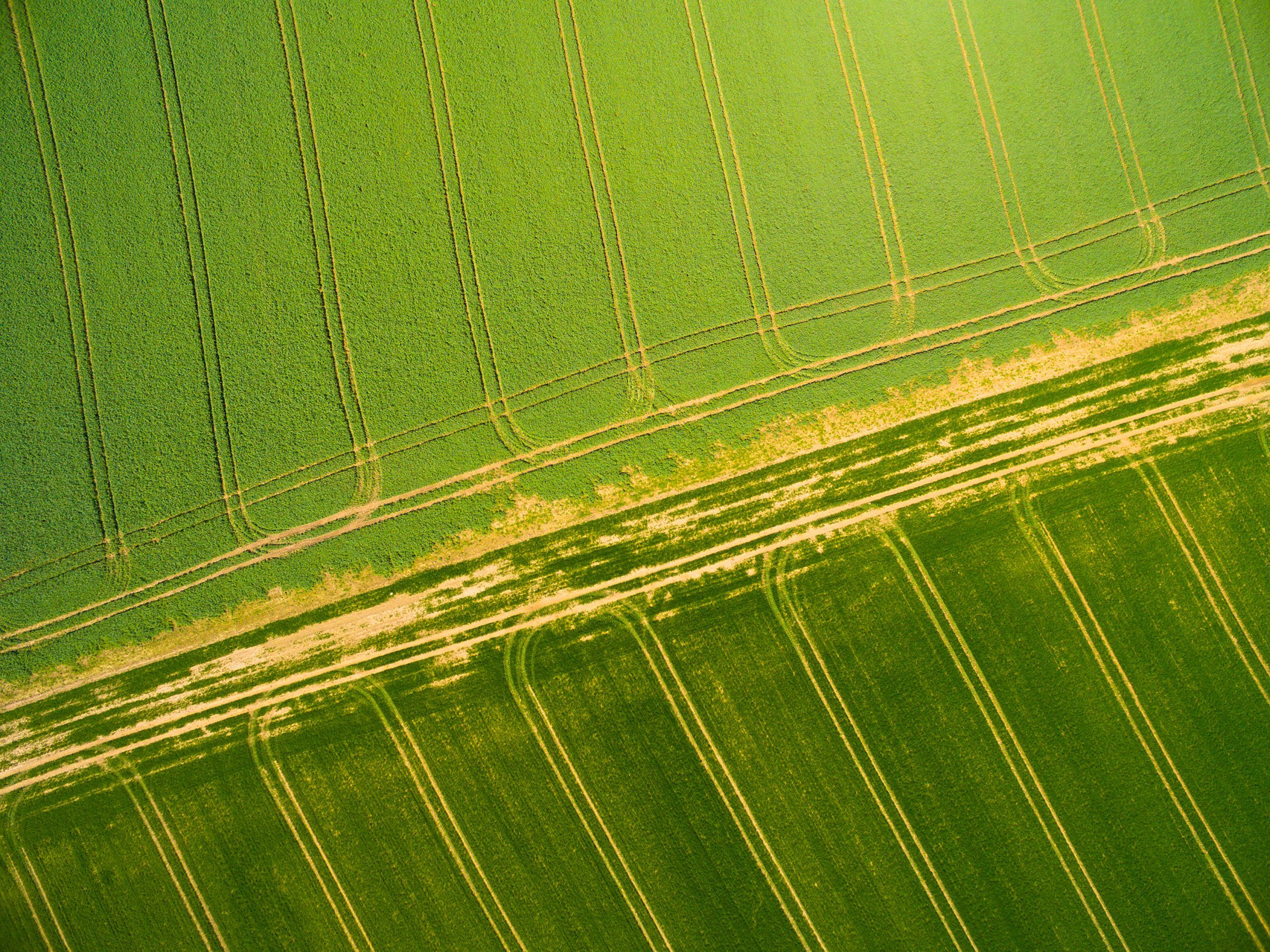Tag: climate-smart agriculture
Atubandike (“Let’s Chat”)
Atubandike (“Let’s Chat”) is a phygital platform co-developed by CIMMYT, Viamo, and farmers to transform agricultural information channels in Zambia’s Eastern and Southern Provinces. Through the toll-free 667 platform, 4,000 farmers – more than 50% of whom are women – access an interactive voice response (IVR) menu powered by a Viamo Database (see infographic). The platform delivers timely and engaging pre-recorded messages on climate-smart agriculture (CSA); enables farmers to ask questions, which informs content for the platform’s biweekly “talk shows” (like radio shows but on a mobile phone); and provides a space for them to share their stories as “peer farmer experiences” on the platform.
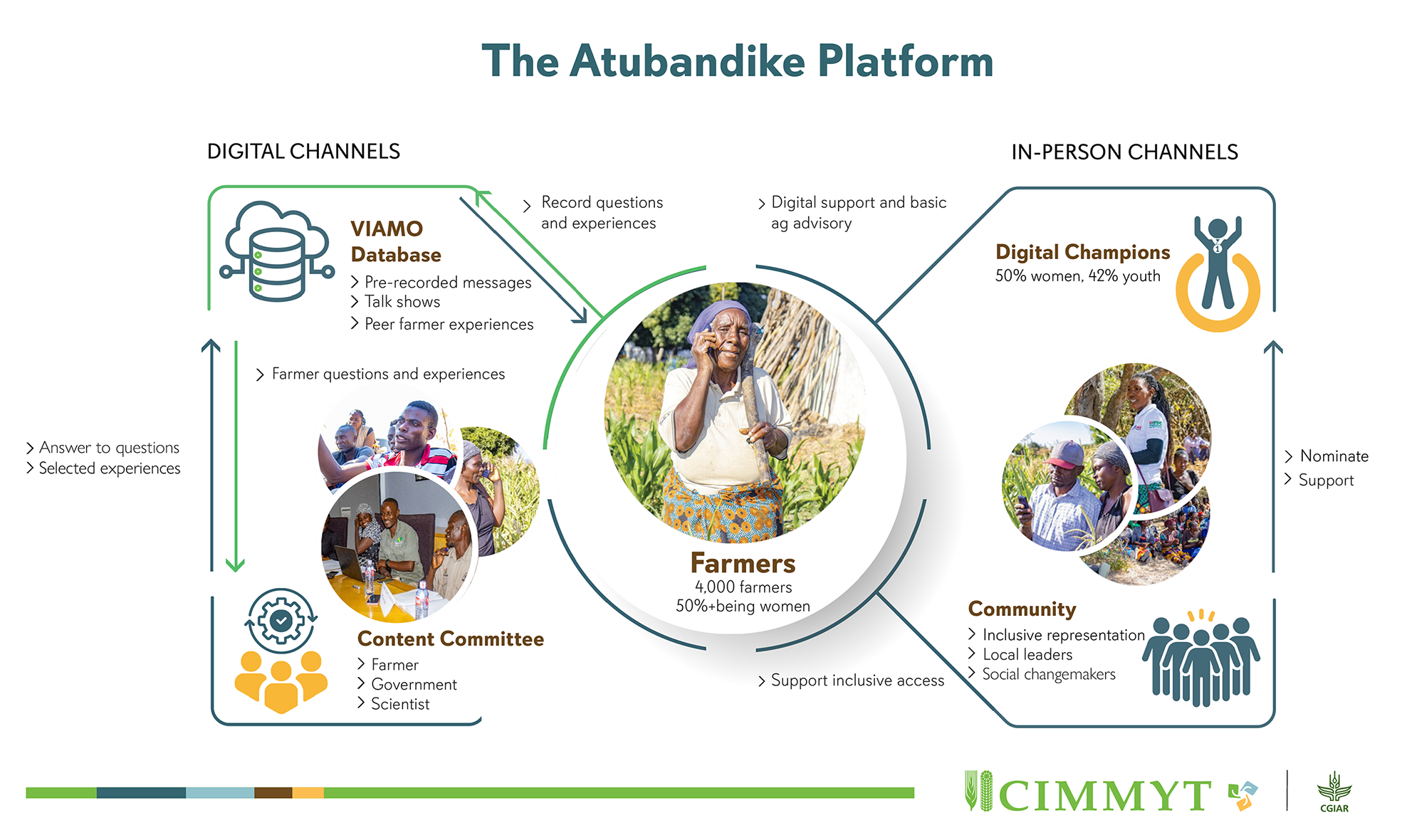
Atubandike’s model involves farmers as co-creators, not merely recipients, of advisory content. Their contributions are curated by a content committee – with farmer, government, and scientist representation – before being published on the 667 platform. Village-based digital champions (50% women, 42% youth aged 18-29) play a crucial role in supporting farmers’ digital skills and promoting trust in digital advisory; they also act as intermediaries between farmers and CIMMYT to address time-sensitive farming questions immediately.
The Atubandike initiative mobilizes local communities to take collective action in challenging social norms that underpin digital access divides. Through community-driven efforts, digital champions are nominated and social changemakers selected to promote inclusive access to the platform.
Together, we are advancing awareness and uptake of CSA practices to boost agricultural productivity and climate change adaptation, using on-the-ground insights to continuously refine Atubandike’s services and ensure every farmer, across the spectrum of demographic groups, thrives in today’s dynamic agricultural landscape.
Listen to Atubandike’s Talk Show:
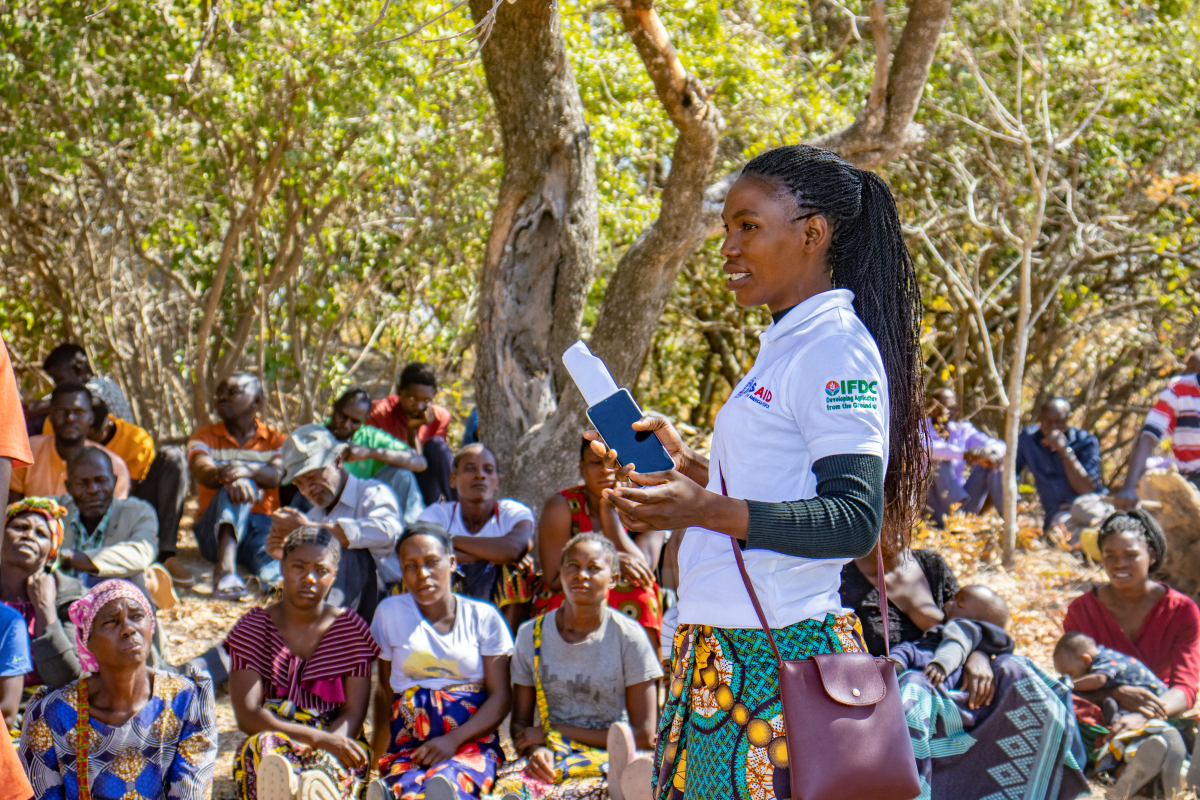
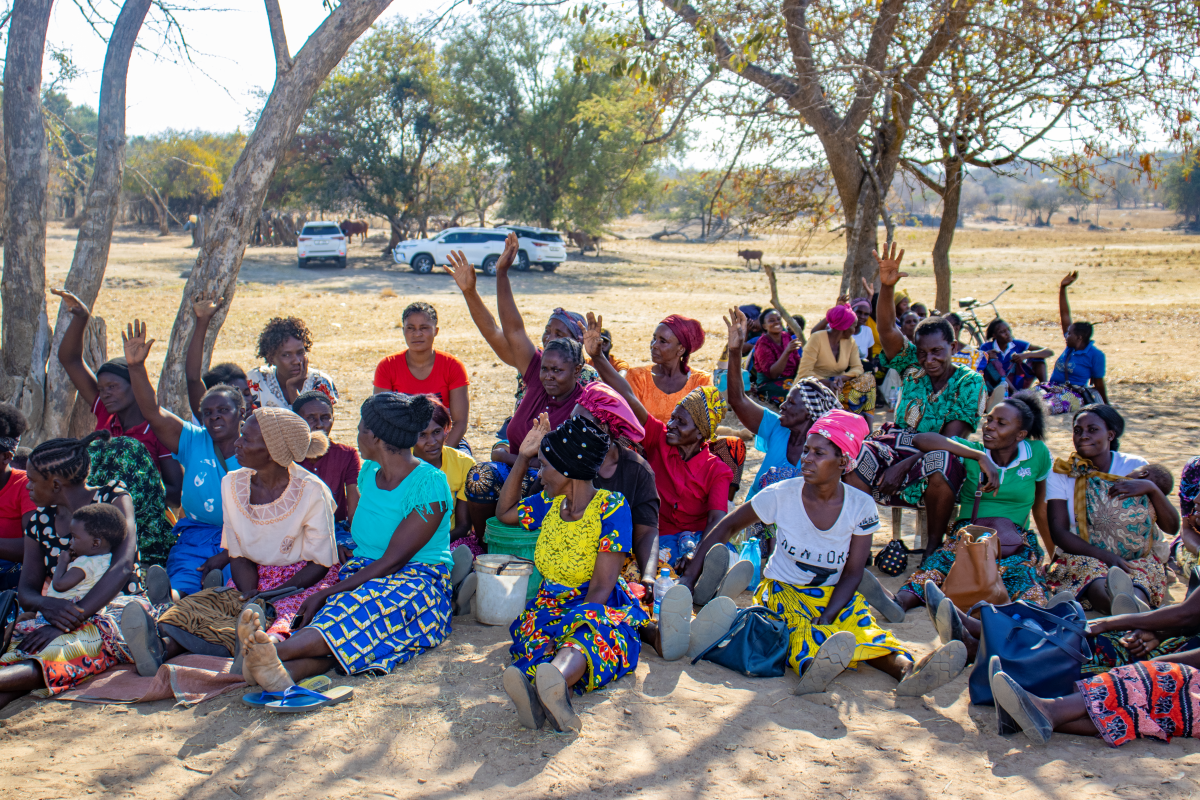
CIMMYT Expands Climate-Smart Interventions in Southern Africa
As Southern Africa faces unprecedented drought conditions CIMMYT continues to lead efforts in reducing the devastating impact of extreme weather. Through its role as a partnership convener, CIMMYT has brought together climate change advisories and climate-smart agriculture to empower farmers, who are demonstrating incredible resilience by continuing to produce food for their families and communities.
“The current climate crisis highlights the urgency of scaling resilient agricultural practices. At CIMMYT, we believe that empowering farmers to adopt drought-tolerant crops and sustainable methods is essential to securing food systems and ensuring communities can weather the challenges ahead,” said Bram Govaerts, Director General of CIMMYT.
By strengthening seed systems and applying global best practices, CIMMYT has empowered farmers across Zambia and Malawi to adapt to drought, ensuring nutritional security and improved livelihoods. The adoption of innovations, including conservation agriculture and resilient legume systems, is increasing farmers’ resilience and buffering against future shocks.
Strengthening Early-Warning Systems
CIMMYT has expanded access to early-warning systems and climate advisories through the GROWSMART campaign, which has reached over 1 million farmers in Zambia and Malawi. Through a network of digital champions and voice-activated advisories accessible via simple mobile phones, CIMMYT has provided critical, real-time information. This has enabled farmers to plan more effectively, reducing crop losses and optimizing planting schedules in response to changing weather patterns.
Scaling Resilient Solutions
CIMMYT has strengthened private sector and civil society partnerships to significantly expand the production of climate-resilient legumes, which were harvested early to provide nutritious food. In combination with maize hybrids like SC 555 and Ntondo (MH35), these legume systems have improved the food security of over 700,000 smallholder farmers.
Moving forward, CIMMYT plans to expand seed systems further, aiming to support the adoption of game-changing crops and conservation agriculture by the end of 2025. This expansion will provide farmers with the tools needed to mitigate the impacts of unpredictable weather patterns, ensuring food security in the face of persistent droughts.
Empowering Women and Youth in Agriculture
Recognizing the vital roles that women and youth play in agriculture, CIMMYT has prioritized gender-sensitive training programs and access to financing for women farmers, who comprise 78% of Zambia’s agricultural workforce. In Malawi, youth-focused initiatives, such as the LUANAR Agribusiness Hub, are helping young agro-entrepreneurs adopt climate-resilient farming methods. These efforts are not only boosting food production but also driving economic empowerment.
Climate-Resilient Maize and Legume Systems: A Lifeline for Farmers
CIMMYT’s Southern Africa Accelerated Innovation Delivery Initiative (AID-I) as part of the USAID Feed the Future investments has played a key role in providing smallholder farmers access to drought-tolerant maize hybrids like SC 555 in Zambia and Ntondo (MH35) in Malawi. These hybrids, combined with legume systems such as groundnut and pigeonpea, are designed to thrive under extreme weather conditions, improving soil health and ensuring profitable, nutritionally secure cropping systems.
In Zambia, the SC 555 maize hybrid has shown exceptional resilience during the 2023-2024 season. Farmers like Mr. Chizela from Chinwe Mpongwe, who faced a six-week dry spell, have harvested abundantly despite the drought, ensuring food security and income stability. Similarly, in Malawi, the Ntondo (MH35) hybrid has demonstrated remarkable drought tolerance at Msunga Farm, with yields of up to 4.37 tons per hectare—far exceeding those of non-drought-resistant varieties.
Building for the Future
CIMMYT’s ongoing research and innovation efforts are focused on developing even more resilient maize and legume varieties to withstand both drought and extreme temperatures. Set for release by 2025, these new varieties will offer farmers sustainable, high-yield solutions to address the growing threat of climate change.
About CIMMYT
CIMMYT is a cutting-edge, nonprofit, international organization dedicated to solving tomorrow’s problems today. It is entrusted with fostering improved quantity, quality, and dependability of production systems and basic cereals such as maize, wheat, triticale, sorghum, millets, and associated crops through applied agricultural science, particularly in the Global South, building strong partnerships. This combination enhances the livelihood trajectories and resilience of millions of resource-poor farmers while working toward a more productive, inclusive, and resilient agrifood system within planetary boundaries.
CIMMYT is a core CGIAR Research Center, a global research partnership for a food-secure future, dedicated to reducing poverty, enhancing food and nutrition security, and improving natural resources.
For more information, visit cimmyt.org.
Sowing seeds of change to champion Conservation Agriculture
Florence Mutize’s thriving fields of maize, in Bindura, a small town in Mashonaland Central region of Zimbabwe, serve as living proof of the successes of Conservation Agriculture (CA), a sustainable cropping system that helps reverse soil degradation, augment soil health, increase crop yields, and reduce labor requirements while helping farmers adapt to climate change. The seeds of her hard work are paying off, empowering her family through education and ensuring that a nutritious meal is always within reach.
“I have been dedicated to these CA trials since 2004, starting on a small plot,” said Mutize. “Now, with years of experience and adaptation to changing climates, I’ve seen my yields increase significantly, harvesting up to a tonne of maize on a 30 by 30m plot using direct seeding and ripping techniques together with crop residue to cover the soil and rotating maize with soybean.”
Mutize is one of many mother trial host farmers implementing CA principles through the CGIAR Ukama Ustawi regional initiative in Bindura. A mother trial is a research approach involving testing and validating a suite of climate-smart agriculture technologies to identify the best-performing ones which can then be adopted on a larger scale.
Nestled in the Mazowe valley, Bindura experiences a subtropical climate characterized by hot, dry summers and mild, wet winters, ideal for agricultural production. But the extremes of the changing climate, like imminent dry spells and El Niño-induced threats, are endangering local farmers. Yet, smallholder farmers like Mutize have weathered the extremes and continued conducting mother trials, supported by the agriculture extension officers of the Agricultural and Rural Development Advisory Services (ARDAS) Department of the Ministry of Lands, Agriculture, Fisheries, Water and Rural Development.
“Where I once harvested only five bags of maize, rotating maize with soybeans now yields 40 bags of maize and 10 bags of soybeans,” Mutize proudly shares.
The UU-supported CA program also extends to farmers in Shamva, like Elphas Chinyanga, another mother trial implementer since 2004.

“From experimenting with various fertilization methods to introducing mechanized options like ripping and direct seeding, these trials have continuously evolved,” said Chinyanga. “Learning from past experiences, we have gotten much more benefits and we have incorporated these practices into other fields beyond the trial area. I am leaving this legacy to my children to follow through and reap the rewards.”
Learning has been a crucial element in the dissemination of CA technologies, with CIMMYT implementing refresher training together with ARDAS officers to ensure that farmers continue to learn CA principles. As learning is a progressive cycle, it is important to package knowledge in a way that fits into current training and capacity development processes.

This process could also be labelled as “scaling deep” as it encourages farmers to move away from conventional agriculture technologies. Reciprocally, scientists have been learning from the experiences of farmers on the ground to understand what works and what needs improvement.
Inspired by the successes of his peers in Shamva, Hendrixious Zvomarima joined the program as a host farmer and saw a significant increase in yields and efficiency on his land.
“For three years, I have devoted time to learn and practice what other farmers like Elphas Chinyanga were practicing. It has been 14 years since joining, and this has been the best decision I have made as it has improved my yields while boosting my family’s food basket,” said Zvomarima.
The longevity and success of the initiative can be attributed to committed farmers like Mutize, Chinyanga, and Zvomarima, who have been part of the program since 2004 and are still executing the trials. Farmer commitment, progressive learning, and cultivating team spirit have been the success factors in implementing these trials. CIMMYT’s long-term advocacy and learning from the farmers has been key to a more sustainable, resilient, and empowered farming community.
A journey through Bangladesh’s ground-breaking agricultural practices
Bangladesh’s agricultural landscape is evolving rapidly, with initiatives focused on modernization, sustainability, and innovation. Projects supported by the United States Agency for International Development (USAID) are working to advance the country’s agriculture through stakeholder collaboration, enhancing productivity, improving mechanization, and embedding sustainable practices.
To explore the impact of this work, USAID officials and senior staff from CIMMYT embarked on a comprehensive tour across multiple project sites on 14 – 19 April 2024. The USAID delegation featured Zachary P. Stewart, production systems specialist from the Bureau for Resilience, Environment, and Food Security, and John Laborde and Muhammad Nuruzzaman from the USAID Bangladesh Mission. From CIMMYT, the team included Sieglinde Snapp, program director from the Sustainable Agrifood Systems Program, Timothy J. Krupnik, country representative for Bangladesh, and Owen Calvert, project leader for the Cereal Systems Initiative for South Asia-Mechanization Extension Activity (CSISA-MEA).
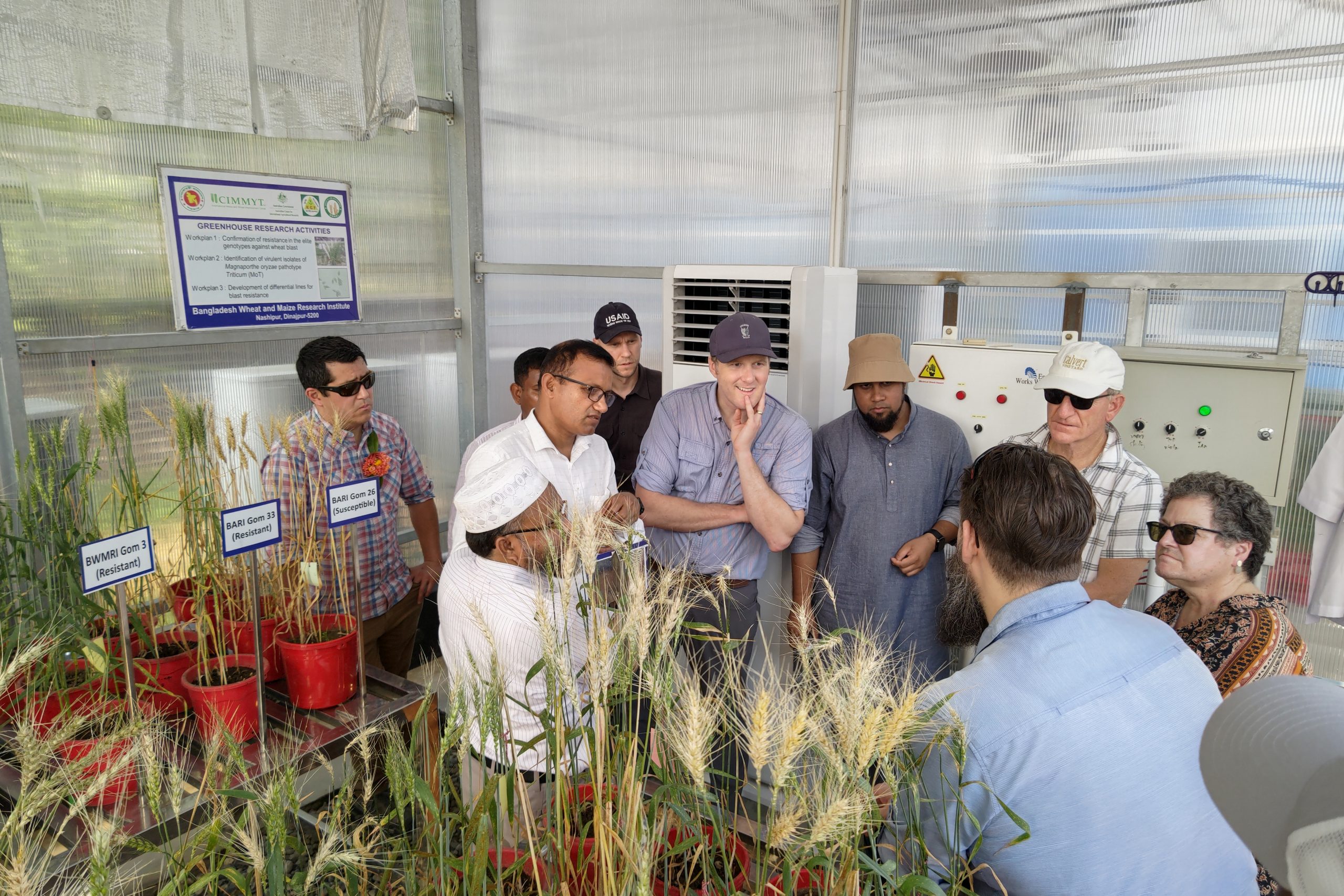
Pioneering agricultural technology
The team visited Dinajpur, Bangladesh to observe the progress of the Transforming Agrifood Systems in South Asia (TAFSSA) CGIAR Initiative, including creative efforts to raise agricultural output, support sustainable practices, and boost the area’s nutrition levels. The integrated strategy of TAFSSA, which combines inclusive community participation with socio-agronomic research, has enabled local farmers to increase revenue, diversify their crop production, and enhance yields. From the premium quality rice (PQR) value chain at the Bengal Auto Rice Mill to the sustainable intensification of mixed farming systems, the visit demonstrated TAFSSA’s dedication to building agricultural resilience and improving lives throughout Bangladesh.
In Faridpur, the team observed CSISA-MEA, a five-year project dedicated to supporting smart mechanization in Bangladesh. This included displays of innovative agricultural machinery, such as onion storage blowers, jute fiber separators, axial flow pumps, and combine harvester spare parts. Stakeholders from various sectors shared insights on how to improve machine service providers’ capacity to manage their businesses effectively.
Sholakundu, a village in Kanaipur Union, Faridpur Sadar, has embraced modern agricultural practices and diversified crop cultivation. This site showcased the impact of mechanized rice transplantation and integrated pest management (IPM) techniques, with the opportunity to observe a live demonstration of mat-type seedling raising for mechanized rice transplantation. Discussions revolved around the benefits of mechanization, IPM activities, and the village’s commitment to enhancing agricultural sustainability and productivity.
Climate-specific farming
The southern coastal region of Bangladesh has long suffered from problems including salinity, drought, waterlogging, and unpredictable weather. Addressing these issues is the USAID-funded Sustainable Intensification Innovation Lab–Asian Mega Delta (SIIL-AMD) project, which encourages climate-resilient farming and better water management.
The initiative engages approximately 400 farmers in trials of improved agronomic techniques through the use of 14 Learning Hubs and the Cluster Farmer Field School (CFFS), aiming to increase output and assist local people in adjusting to the special conditions of the coastal polder zone.
“Bangladesh’s women farmers, especially those in this area and the coastal regions, are incredibly hardworking,” stated Zachary P. Stewart. “Even in the face of adverse weather conditions, their dedication has led to excellent crop yields. If provided with further training and allocated more time, these industrious women could take the lead in driving Bangladesh’s agricultural progress forward.”
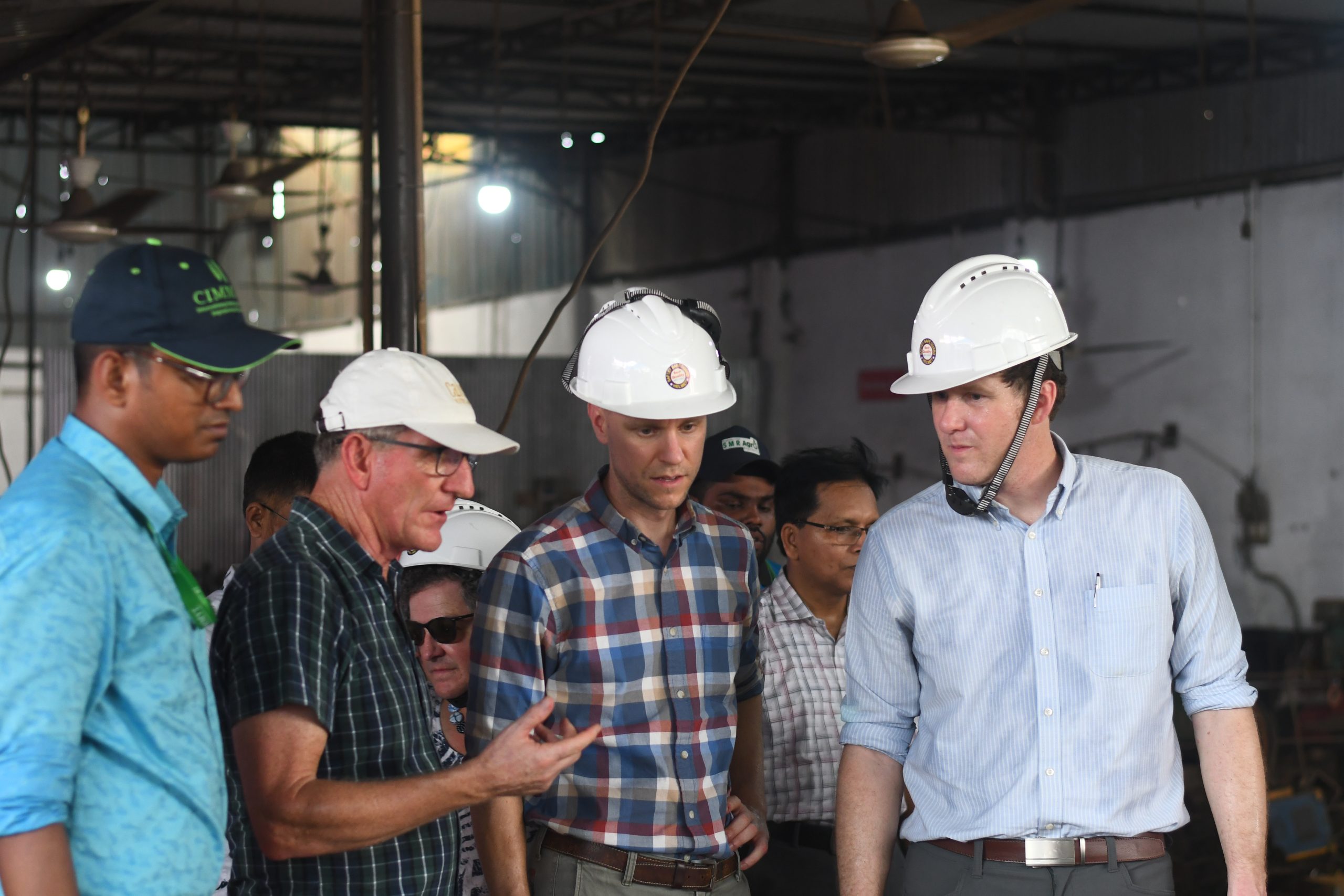
Systemic self-sufficiency
For reasons of development and sustainability, Bangladesh’s agriculture industry is focused on using locally made machinery and spare parts. As USAID personnel visited the SMR Agro Engineering Workshop and Foundry, situated in Jashore Sadar, they witnessed how support by CSISA-MEA has improved the agricultural mechanization market system. SMR Agro Engineering produces high-quality agricultural machinery and spare parts, increasing farmers’ productivity and decreasing labor intensity.
CSISA-MEA’s support has been significant in preparing new industrial layouts, raising labor skill levels, providing technical guidance, and facilitating financing. Moreover, through the development of business partnerships with lead companies, agriculture-based light engineering enterprises (ABLEs), and dealers, CSISA-MEA ensures a strong network that supports the widespread use of mechanized services. This collaborative effort marks a significant step towards enhancing rural livelihoods and achieving sustainable agricultural practices in Bangladesh.
Global research partnerships
In addition to visiting farmers’ fields, the team also attended the Bangladesh Agricultural Research Institute (BARI), the nation’s largest agricultural research center which focuses on improving crop yields, food security, and employment. The visitors explored the work in mechanization, IPM, and farm machinery, with a tour of BARI’s IPM and toxicology laboratories highlighting the organizations’ sustainable approach to pest management.
The final visit was to Ispahani Agro Limited (IAL), a leading bio-pesticide producer in Gazipur. IAL is at the forefront of bio-rational pest management, creating environmentally friendly, non-toxic inputs. CIMMYT’s assistance has been crucial for the company’s growth, with the tour covering production units, laboratories, and discussions on IAL’s business development.
Overall, the experience offered a comprehensive overview of collaborative activities between USAID, CIMMYT, and Bangladeshi stakeholders. From research and mechanization to bio-rational pest management, the combined efforts boost output and encourage sustainability and responsible environmental behavior.
As Bangladesh continues to embrace modern farming practices, partnerships and projects will play a pivotal role in defining how the country’s agricultural industry evolves into one that is economically viable and sustainable.
CIMMYT joins global efforts to curb greenhouse emissions and strengthen food systems
The 2023 UN Climate Change Conference (COP 28) took place from November 30 to December 12, 2023, in Dubai, UAE. The conference arrived at a critical moment when over 600 million people face chronic hunger, and global temperatures continue to rise at alarming rates. CIMMYT researchers advocated for action into agriculture’s mitigating role in climate change, increasing crop diversity, and bringing the tenets of sustainability and regenerative agroecological production systems to a greater number of farmers.
Directly addressing the needs of farmers, CIMMYT proposed the creation of an advanced data management system, training, and protocols for spreading extension innovations such as digital approaches and agronomic recommendations to farmers via handheld devices to harmonize the scaling in Africa of regenerative agriculture—diverse practices whose outcomes include better productivity and environmental quality, economic feasibility, social inclusivity, and nutritional security.
CIMMYT presented research showing that in times of fertilizer shortages, targeting nitrogen supplies from inorganic and organic sources to farms with minimal access to nitrogen inputs can improve nitrogen-use efficiency and helps maintain crop yields while limiting harm from excesses in fertilizer use. Examining how food production is driving climate change, CIMMYT promoted ways to lessen climate shocks, especially for smallholder farmers who inordinately suffer the effects of climate change, including rising temperatures and extended droughts. Improved, climate-resilient crop varieties constitute a key adaptation. Boosting farmer productivity and profits is a vital part of improving rural livelihoods in Africa, Asia, and Latin America.
When asked about CIMMYT’s contribution to COP 28, Bram Govaerts, CIMMYT’s director general, highlighted the inclusion of agriculture in the COP28 UAE Declaration on Sustainable Agriculture, Resilient Food Systems, and Climate Action as part of various potential solutions for climate change, an effort that CIMMYT supported through advocacy with leaders and government officials.
“Our participation addressed some of the pressure points which led to this significant recognition. It further cleared our role as an active contributor to discussions surrounding the future of food and crop science,” said Govaerts.
Unlocking the potential of crop genetic diversity
“The diversity stored in today’s gene banks contains the potential to unlock genes that can withstand drought and warmer temperatures,” said Sarah Hearne, CIMMYT’s director of Genetic Resources at a side-event: Crop diversity for climate change adaptation and mitigation contributing to resilient and nature positive futures for farmers globally.
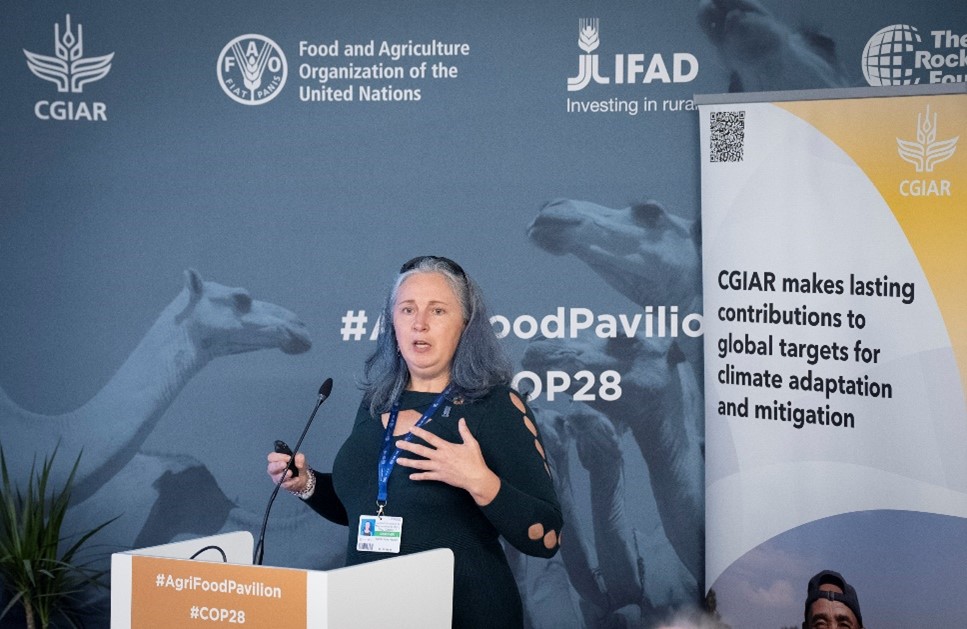
Hearne explained the process that characterizes plant DNA to identify the ideal, climate-adaptable breeding traits. This classification system also opens the door for genetic modeling, which can predict key traits for tomorrow’s climatic and environmental conditions.
“Our thinking must shift from thinking of gene banks to banks of genes, to make vibrant genetic collections for humanity, opening up genetic insurance for farmers,” said Hearne.
Working towards a food system that works for the environment
With an increased strain on food production, sustainability becomes critical for long-term human and environmental health. Sarah Hearne and Tek Sapkota, agricultural systems and climate change senior scientist, from CIMMYT participated in a panel discussion: Responsible consumption and sustainable production: pathways for climate-friendly food systems. They shared how progress in genetic innovation and fertilizer use can contribute to sustainable consumption and a resilient food system.
Fertilizer use remains highly skewed, with some regions applying more fertilizer than required and others, like sub-Saharan Africa, not having sufficient access, resulting in low crop yields. However, to achieve greater food security, the Global South must produce more food. For that, they need to use more fertilizer. Just because increased fertilizer use will increase greenhouse gases (GHGs) emissions, institutions cannot ask smallholder farmers not to increase fertilizer application. Increased GHGs emission with additional fertilizer application in low-input areas can be counterbalanced by improving Nutrient-Use Efficiency (NUE) in high-output areas thereby decreasing GHGs emissions. This way, we can increase global food production by 30% ca with the current level of fertilizer consumption.
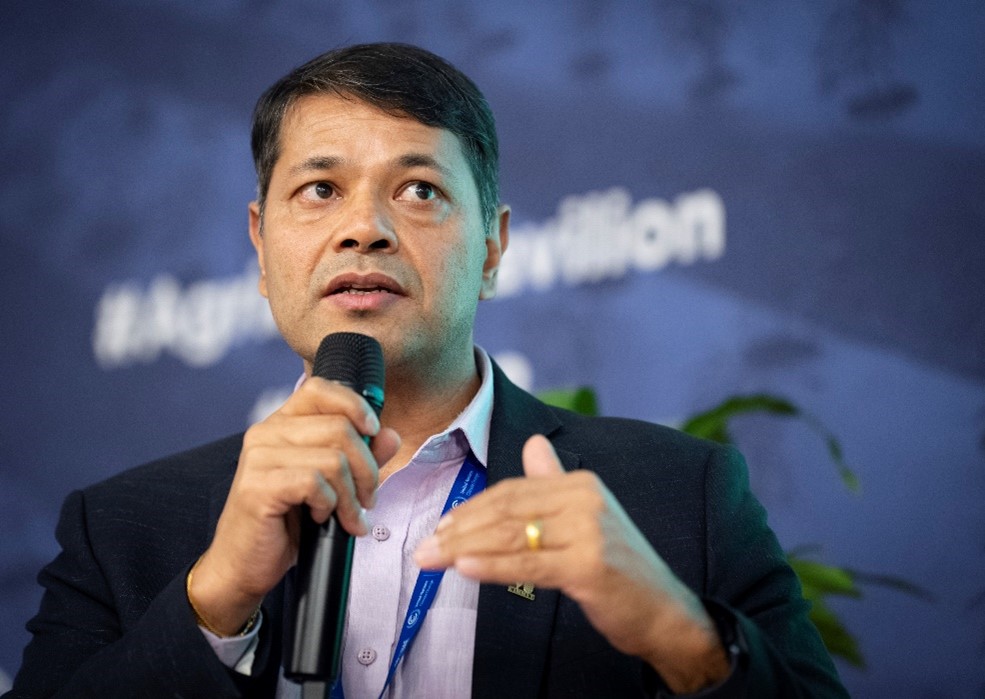
“This issue needs to be considered through a holistic lens. We need to scale-up already proven technologies using digital extensions and living labs and linking farmers with markets,” said Sapkota.
On breeding climate-resilient seeds, Hearne addressed whether farmers are accepting new seeds and how to ensure their maximum adoption. Hearne detailed the partnership with CGIAR and NARS and the numerous technologies advancing the selection of ideal breeding traits, considering shortened breeding cycles, and responding to local needs such as heat or flood tolerance, and traditional preferences.
“Drought-tolerant maize, developed by CIMMYT and the International Institute of Tropical Agriculture (IITA), has benefited over 8 million households in sub-Saharan Africa, which proves that farmers are increasingly receptive to improved seeds. With a better selection of appropriate traits, we can further develop and distribute without yield penalties,” said Hearne.
Regenerative and agroecological production systems
Researchers have studied regenerative and agroecological production systems for decades, with new and old research informing current debates. These systems restore and maintain ecosystems, improving resource use efficiency, strengthening resilience, and increasing self-sufficiency. In his keynote presentation, Sapkota presented 3 examples of regenerative agriculture and agroecological systems: conservation agriculture, cropping system diversification and site-specific nutrient management and their impact on food production, climate change adaptation and mitigation.
“As the science continues to develop, we need to harness digital capacity to co-create sustainable solutions alongside local, indigenous knowledge,” said Sapkota. “While we should continue research and innovation on cutting-edge science and technologies, we should also invest in knowledge sharing networks to spread access to this research; communication is fundamental for further adoption of these practices.”
Strengthening resilience in Mutoko farmers through agroecological research
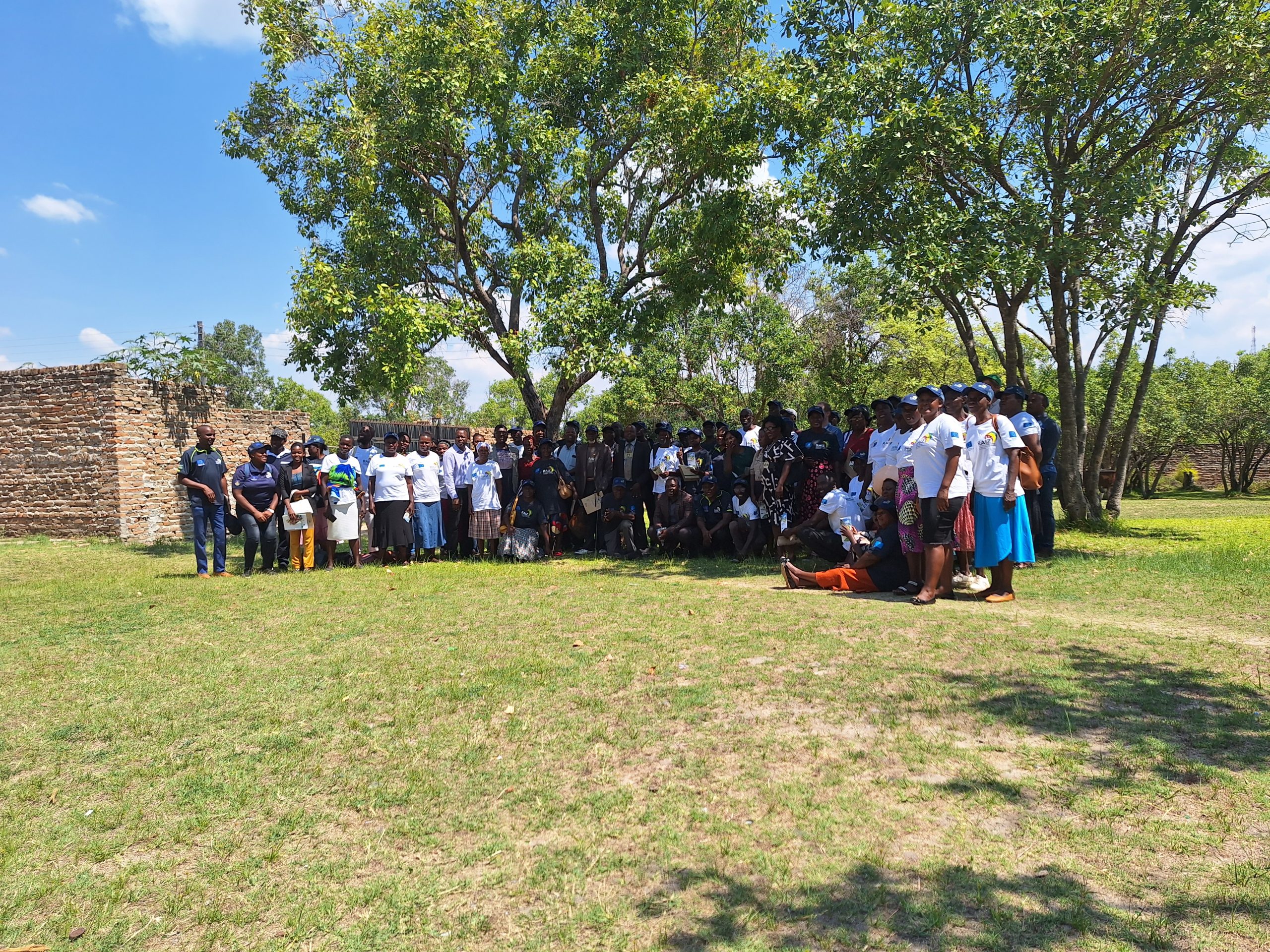
Mutoko, a semi-arid area located in Mashonaland east of Zimbabwe, is prone to droughts and unpredictable rainfall patterns. In an effort to tackle the challenges faced by local smallholder farmers in the region, partners of the Resilience Building through agroecological intensification in Zimbabwe (RAIZ) project organized a participatory workshop to amplify the project’s mandate and gather feedback from key stakeholders. The workshop at Mutoko brought together diverse participants from the Women Affairs, Youth, and Agriculture ministries from the government of Zimbabwe, local leaders and council, extension officers, students, and farmers from Wards 10 and 8. Attending farmers and stakeholders expressed interest in the project that would enable them to face challenges and improve agricultural practices in Mutoko.
Working towards climate-smart solutions: the RAIZ project
RAIZ is a collaborative effort between CIMMYT, the French Agricultural Research Centre for International Development (CIRAD), and the University of Zimbabwe. The project is funded by the European Union, and it focuses on recognizing the strategic role of agroecological approaches in tackling climate change and enhancing sustainable agriculture in arid areas. Research operations are underway in Mutoko to produce scientific evidence and contribute to agroecology policy.
Agroecology offers climate-smart solutions that help farmers adapt to changing conditions, mitigate greenhouse gas emissions, conserve natural resources, and promote food security and resilience in the face of climate uncertainties. RAIZ implements ‘Living Labs’ which strengthens collaboration between diverse stakeholders, including farmers and scientists, whose collective insights help develop demand-driven solutions.
During the Mutoko workshop, Professor and Systems Agronomist Regis Chikowo provided context of RAIZ and emphasized on its goal of helping build resilience in farmers through sustainable approaches. “The aim is not only to help farmers adapt to climate change but also to enable them to thrive in the face of adversity,” said Chikowo.

Building synergies between research and farmer realities
To bridge the gap between research and farmer realities, six student-researchers of RAIZ are working on various aspects of building farmer resilience based on agroecological principles. Their study areas comprise of weed control, climate-proofing with resilient small grain varieties, indigenous knowledge systems, and soil health among others. One student-researcher, in collaboration with farmers, is conducting research on weed control and its impact on crop yield. In all, they are set to articulate and tackle climate change in Mutoko.
“Through my research in weed control and how it affects yields, we are hosting trials with some farmers. We are putting into effect mulch practices gumbeze ramwari, and assessing how it affects yields. We are then intercropping maize with cowpea so that farmers spend less time fighting off weeds, while promoting crop diversification,” says Juliet Murimwa, a Ph.D. student.
Knowledge and sources of information on when to expect rains and average temperatures are vital for farmers to better plan the entire planting-to-harvesting operations. Recognizing this, research student Rejoice Nyoni is studying the types and usefulness of climate services information accessed by smallholder farmers in RAIZ project sites.
“My research is centered on understanding whether smallholder farmers are getting enough knowledge from available sources, including radio which is more prominent,” says Nyoni. Farmers have long relied on traditional knowledge systems to predict weather patterns and plan farming activities. However, with climate change, some of these traditional knowledge sources are being altered. “This season, I will be joining our farmers in Mutoko to discuss and understand which indigenous knowledge systems they use to gather information about weather patterns. We want to find ways to ensure that such wisdom does not get lost, as generations are slowly moving away from traditional cultures and norms,” she adds.
CIMMYT’s work in RAIZ operational areas supported by graduate students, is also testing the effectiveness of newly availed local commercial organic fertilizers and how they contribute to climate smartness when used along with conservation agriculture practices. CIMMYT is also leading the development of an agroecology handbook, set to be used by extension staff and other development practitioners.
In line with the International Year of Millets in 2023, RAIZ actively promotes the cultivation of small grains to enhance the resilience of local farmers. As part of the project, a student researcher is conducting trials in Mutoko to assess the performance of different small grain varieties in the face of climate change. Farmers in Mutoko’s Ward 10 have started experimenting with small grains and have experienced promising yields. A farmer in Mutoko Ward 10, Mudzengera, shared his positive experience with growing sorghum, “Last year we grew three varieties of sorghum. We really liked the new variety as it was not prone to bird attack. On the other hand, the native variety we usually grow is prone to birds feasting on them. We realized good yields which improved household nutrition. I look forward to another farming season with such trials on sorghum,” he says.

A shared vision for a sustainable future
A visioning exercise conducted during the workshop, solicited views from the farmers on how they envision the future of agriculture. The session, facilitated by Isaiah Nyagumbo, senior agronomist at CIMMYT, and marking the initiation of Living Laboratories in the district, started with asking farmers what change and developments they would like to see in their ward after three to four years, with respect to agriculture. The farmers were disaggregated into four groups by gender and ward. The emerging aspirations revolved around the twin goals of safeguarding the environment and enhancing crop yields. Farmers from both wards 10 and 8, expressed a shared desire to improve agricultural marketing infrastructure, agroforestry, and the protection of forests, recognizing the critical role that trees play in mitigating climate change and preserving biodiversity. Mulching, which holds immense potential in conserving soil moisture, and adopting mechanized operations were among other aspirations. Furthermore, the participants expressed interest in cultivating small grains, drought-tolerant maize, use of renewable energy, and leveraging digital platforms.
Zambuko Livelihoods Initiative
Persistent vulnerability to frequent climate-related shocks, exacerbated by the effects of climate change poses a continual threat to the capacity of communities to secure an adequate and nutritious food supply throughout the year. The R4 Rural Resilience Initiative, led by the World Food Programme (WFP), aims to enable vulnerable, smallholder farmers to increase their food security, income, and resilience by managing climate-related risks. Expanding on the success of R4, WFP launched the Zambuko Livelihoods Initiative, a comprehensive program supported by United States Agency for International Development (USAID). This initiative strategically concentrates on fostering social cohesion within communities, advancing crop and livestock production, and facilitating improved access to financial resources.
In a collaborative endeavor, CIMMYT is leading the implementation of the climate-smart agriculture and mechanization components of the Zambuko program, with a specific focus on Masvingo Rural (Ward 15) and Mwenezi (Ward 6) in Zimbabwe. Focused on mitigating the impact of climatic shocks and stresses, the initiative aims to empower local farmers, improve agricultural practices, and foster sustainable livelihoods. This collaborative effort represents a crucial step towards building resilience in the face of climate challenges, offering a holistic approach to enhancing the adaptive capacity of vulnerable communities.
Key objectives
The overall objective is to diversify and strengthen climate-resilient livelihoods, while mitigating household vulnerability to recurring shocks, such as droughts and floods.
CIMMYT oversees interlinked goals which are –
- Viable conservation agriculture (CA) and mechanization options are tested and expanded in rural farming communities.
- Seed and fodder options are tested and available for wider use by smallholders.
- Increased smallholder farmer knowledge and capacity to implement climate-smart agriculture interventions to build resilience.
Afriseed: How improved legume seed can help transform Zambia’s agrifood systems
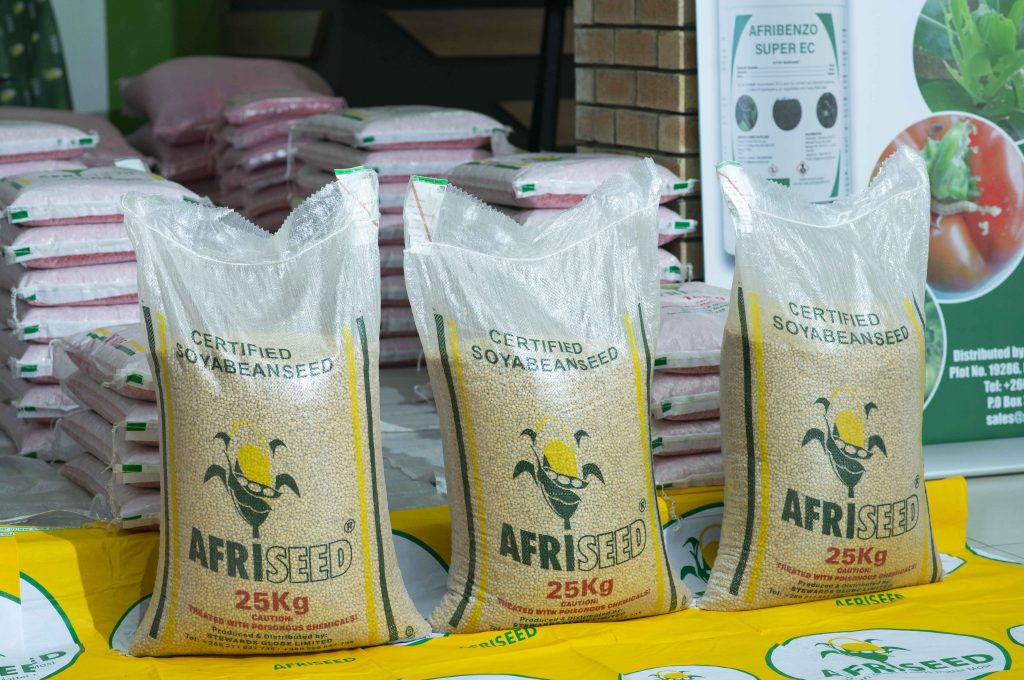
In Zambia, smallholder farmers obtain their seed from a variety of sources. Over 75 percent of farmers in Zambia have adopted certified maize seed and about 30 percent in southern Africa, overall. The private sector has been instrumental in creating demand for certified and timely delivery of seed to remote areas, and the Government of Zambia’s Farmer Input Support Programme (FISP) has largely contributed to better accessibility to certified seed for farmers. In 2022–2023, of the three million registered smallholder farmers in Zambia, more than one million accessed certified seed through FISP.
Afriseed is a seed company in Zambia that has been gaining ground in local seed markets. It has emerged as a catalyst for helping smallholder farmers transition to new, high-yielding legume varieties. Afriseed provides solutions to help smallholders increase their agricultural productivity with improved seed varieties of cereals and legumes and assist them with technology transfer. The company aims to increase the food security and incomes of Zambia’s smallholder farming community, which accounts for 90 percent of agricultural output in the country. During the 2022–2023 farming season, a critical turning point was reached when Afriseed became a partner in the Southern Africa Accelerated Innovation Delivery Initiative (AID-I) Rapid Delivery Hub, or MasAgro Africa, a two-year project under CIMMYT, with the aim of scaling-up production of certified seed varieties of soybean and common bean.
Under the partnership, Afriseed promotes the cultivation of improved legume seed through a smallholder farmer seed multiplication approach. By engaging with practicing smallholder farmers and signing grower contracts, basic seeds are multiplied into certified seed for soybean and common bean. Certified seed is a known variety produced under strict seed certification standards to support varietal purity. In collaboration with the Seed Control and Certification Institute (SCCI), the country’s national seed authority, contracted farmers received training on climate-smart agricultural techniques and seed production guidelines. Through extension services to seed growers, smallholder farmers can adhere to the seed production guidelines set out in the National Seed Act to ensure the quality of certified seed produced.
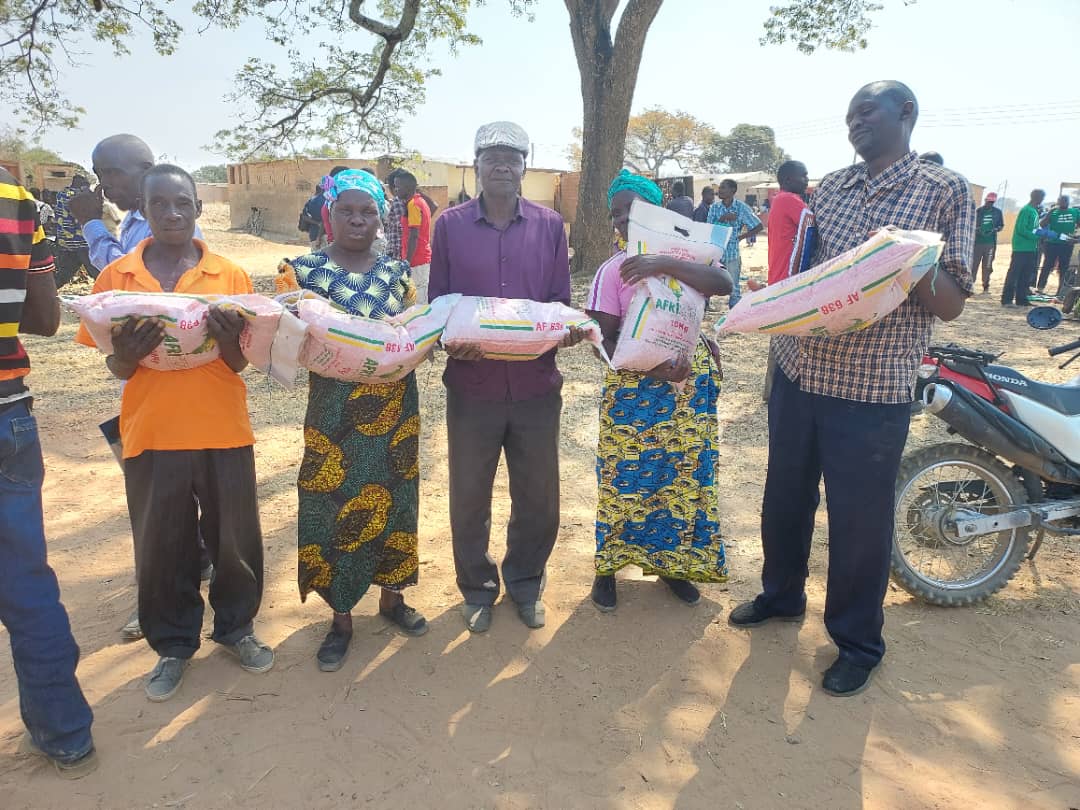
Afriseed has invested more than USD 335,000 toward supporting the production, aggregation, and processing of 317 t of certified climate-smart legume seeds—265 metric tonnes (MT) for soybean and 52 MT for common bean. Data have shown that the seeds were aggregated from 313 smallholder seed growers, 40 percent of whom were women, in Zambia’s Eastern Muchinga, Copperbelt and the Northern provinces. Seed aggregation improves access to quality seed varieties, increases crop yields and incomes, enhances integration into value chains, and creates market links for smallholder farmers.
Notable progress has been made with the contracted farmers, who have applied improved crop management practices and technologies on more than 600 ha of land to produce the seed. With this encouraging progress, Afriseed intends to scale up its last-mile seed distribution strategy to reach and directly help an estimated 35,000 underserved rural smallholder farming households with improved legume seeds in the 2023–2024 cropping season.
AID-I is one of the ways in which Feed the Future, the U.S. Government’s global food security and hunger initiative led by USAID, is taking immediate action to help cushion the blow of high fuel and fertilizer prices on farmers. One of the project’s initial actions is to strengthen local seed systems so that agribusinesses can reach smallholder farmers with a diversity of improved seeds varieties, including climate-resilient and more nutritious varieties for maize and legumes.
Every drop of water matters: Leading global research institutes ally to aid farmers in dry and saline ecosystems
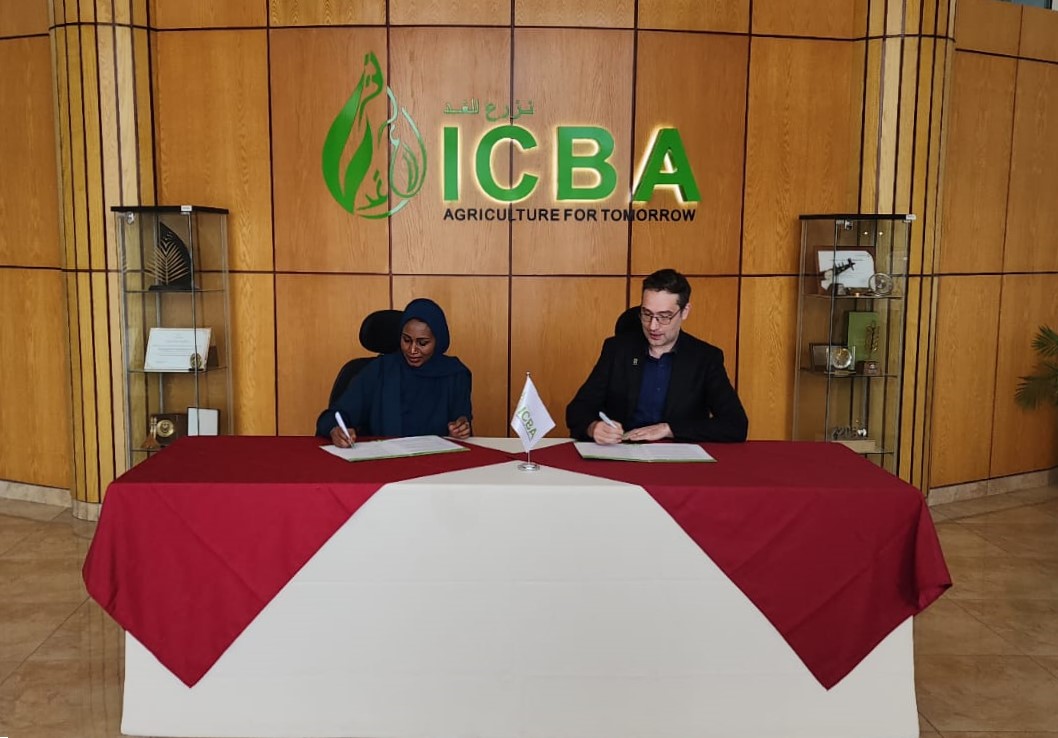
Dubai/Mexico City, 10 January 2024 – An award-winning not-for-profit agricultural research center recognized for its work on sustainable agriculture in the Middle East and North Africa is joining forces with the global organization whose breeding research has contributed to half the maize and wheat varieties grown in low- and middle-income countries.
The International Center for Biosaline Agriculture (ICBA) and CIMMYT have signed an agreement to jointly advance the ecological and sustainable intensification of cereal and legume cropping systems in semi-arid and dryland areas.
“Farmers in such settings confront enormous risks and variable conditions and often struggle to eke out a livelihood, but they still comprise a critical part of the global food system and their importance and challenges are mounting under climate change,” said Bram Govaerts, director general of CIMMYT. “ICBA brings enormously valuable expertise and partnerships to efforts that will help them.”
The specifics of the two centers’ joint work are yet to be defined but will cover soil health, salinity management approaches, crop productivity and breeding, gender-transformative capacity development, and finding markets for underutilized crops, among other vital topics.
Established in 1999 and headquartered in the United Arab Emirates (UAE), ICBA conducts research and development to increase agricultural productivity, improve food security and nutrition, and enhance the livelihoods of rural farming communities in marginal areas. The center has extensive experience in developing solutions to the problems of salinity, water scarcity and drought, and maintains one of the world’s largest collections of germplasm of drought-, heat- and salt-tolerant plant species.
“We are excited about the synergies our partnership with CIMMYT will create. It will focus on a range of areas, but the priority will be given to developing breeding and cropping system innovations to improve farmers’ food security and nutrition, while enhancing water security and environmental sustainability, and creating jobs and livelihoods in different parts of the world,” said Tarifa Alzaabi, director general of ICBA.
Based in Mexico but with projects in over 80 countries and offices throughout Africa, Asia and Latin America, CIMMYT operates a global seed distribution network that provides 80% of the world’s breeding lines for maize and wheat, including many that offer superior yields and resilience in dry conditions and in the presence of crop diseases and pests.
The center is also conducting breeding and seed system development for dryland crops such as sorghum, millet, groundnut, cowpea, and beans, known for their climate resilience and importance as foods and sources of income for smallholder farm households and their communities.
With global and local partners, CIMMYT is also refining and spreading a suite of resource-conserving, climate-smart innovations for highly diverse maize- and wheat-based cropping systems, including more precise and efficient use of water and fertilizer, as well as conservation agriculture, which blends reduced or zero-tillage, use of crop residues or mulches as soil covers, and more diverse intercrops and rotations.
As part of the new agreement, the centers will also explore research collaborations with universities and research institutions in the UAE to develop and test maize varieties that are suitable for the UAE’s climate and soil conditions, as well as organizing training programs and workshops for farmers, extension workers, and other stakeholders in the UAE to build their capacity in maize production and management.
About ICBA
The International Center for Biosaline Agriculture (ICBA) is a unique applied agricultural research center in the world with a focus on marginal areas where an estimated 1.7 billion people live. It identifies, tests, and introduces resource-efficient, climate-smart crops and technologies that are best suited to different regions affected by salinity, water scarcity, and drought. Through its work, ICBA helps to improve food security and livelihoods for some of the poorest rural communities around the world.
About CIMMYT
CIMMYT is a cutting edge, non-profit, international organization dedicated to solving tomorrow’s problems today. It is entrusted with fostering improved quantity, quality, and dependability of production systems and basic cereals such as maize, wheat, triticale, sorghum, millets, and associated crops through applied agricultural science, particularly in the Global South, through building strong partnerships. This combination enhances the livelihood trajectories and resilience of millions of resource-poor farmers, while working towards a more productive, inclusive, and resilient agrifood system within planetary boundaries. CIMMYT is a core CGIAR Research Center, a global research partnership for a food-secure future, dedicated to reducing poverty, enhancing food and nutrition security and improving natural resources.
For more information or interviews:
CIMMYT
Sarah Fernandes
Head of Communications
s.fernandes@cgiar.org
ICBA
Abdumutalib Begmuratov
Head of Knowledge Management and Communications
a.begmuratov@biosaline.org.ae
Transforming rural agriculture with improved seed and mechanization
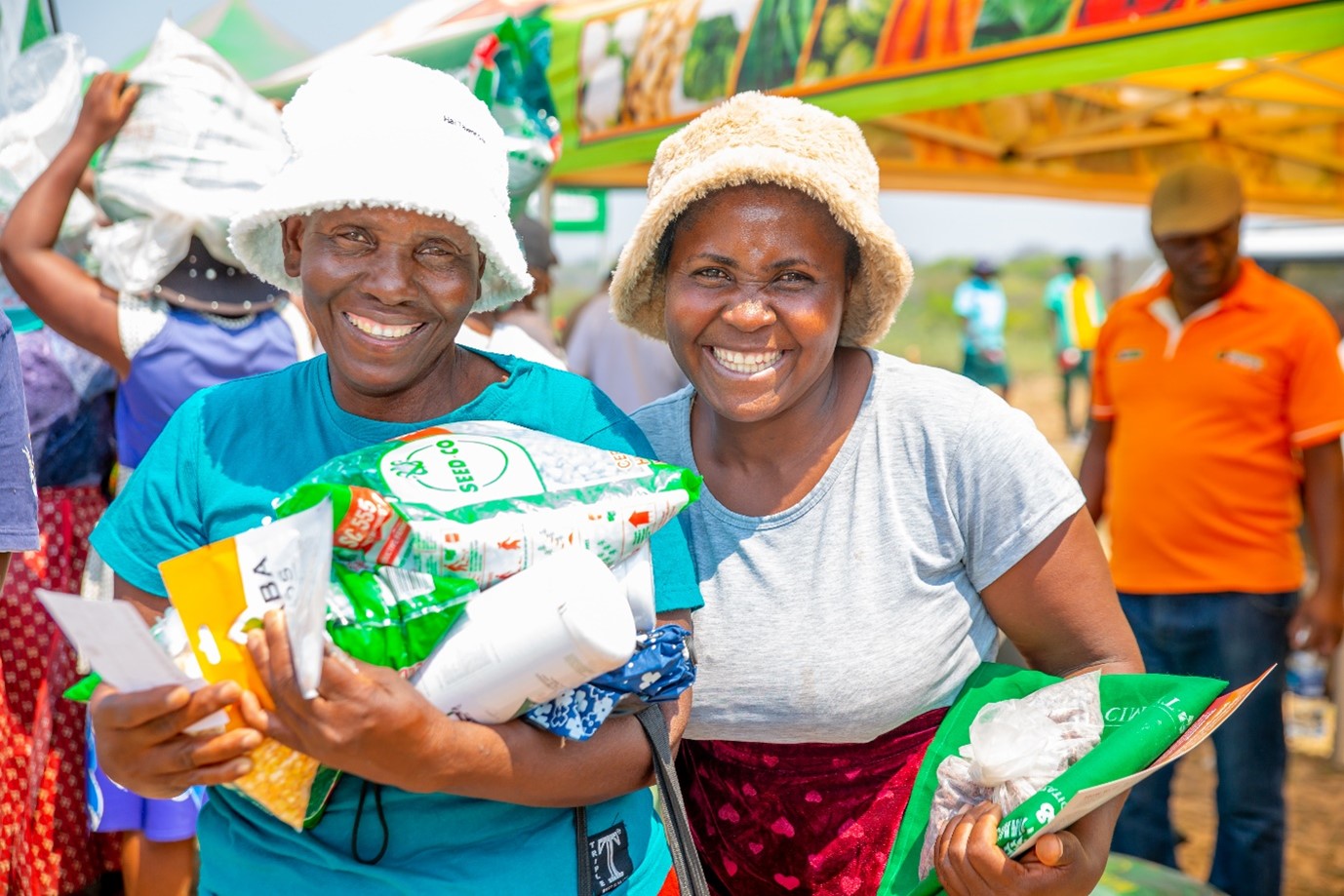
More than 1,300 smallholder farmers, across the Mwenezi and Masvingo districts of Zimbabwe, braved the hot morning sun to attend the fourth edition of the seed and mechanization fair organized by CIMMYT and partners in early October 2023. The event, themed “Harnessing improved seed and mechanization for climate resilience,” saw these farmers from all walks of life—first timers to past attendees—eager to participate, learn and explore the innovations on display.
Evolving over time, the seed and mechanization fair has continued to serve as a strategic platform to connect local farmers with private sector companies while enhancing the uptake of drought-tolerant maize varieties and scale-appropriate machinery. “Since 2020, CIMMYT-driven seed fairs have encouraged smallholder farmers in semi-arid areas, to grow the right seed at the right time to avoid any shortcomings due to unpredictable of weather patterns,” said Christian Thierfelder, principal cropping systems agronomist at CIMMYT.
Fast approaching farming season
El Niño continues to pose a threat to farmers especially in semi-arid areas such as in Mwenezi district situated in southern Zimbabwe and Masvingo district in south-eastern Zimbabwe which are drought prone areas characterized by high temperatures, rainfall deficit, among other challenges. Through the seed fairs, CIMMYT, a consortium member of the World Food Program projects, R4 Rural Resilience and the Zambuko Livelihoods Initiatives supported by the Swiss Agency for Development and Cooperation (SDC) and USAID, has been at the forefront, advocating for and inspiring local farmers to buy and use seed varieties suitable for their environment, while encouraging farming as a business. In addition, the regional project Ukama/Ustawi Diversification in East and Southern Africa joined efforts to support farmers in income diversification from pure cereal-based systems to more diversified cereal-legume and mechanized farming systems.
“I believe this is the right function at the right time as we prepare for the next farming season. From this event, we anticipate that farmers will say, ‘Yes we have received new technology, yes we have knowledge on new varieties, yes we have information about the weather forecast’. We now have confidence that farmers are well-equipped and ready for the season to achieve the Zimbabwe Vision 2030,” said Isaac Mutambara, district development coordinator from Mwenezi.
Building resilience with drought-tolerant varieties
Amid climate change, equipping farmers with climate-smart knowledge and the right seed varieties has been central to the seed fairs. Working hand in hand with the government, CIMMYT has been breeding drought tolerant, orange maize with high nutritional value. “We encourage the growing and consumption of crops with nutritional value for household food security. Furthermore, we have different varieties of orange maize which are drought-tolerant,” said Thokozile Ndhlela, maize line development breeder. In addition, CIMMYT as part of HarvestPlus, has been encouraging the growing and consumption of nutritious NUA45 beans which are high in iron and zinc.
Mechanizing agriculture
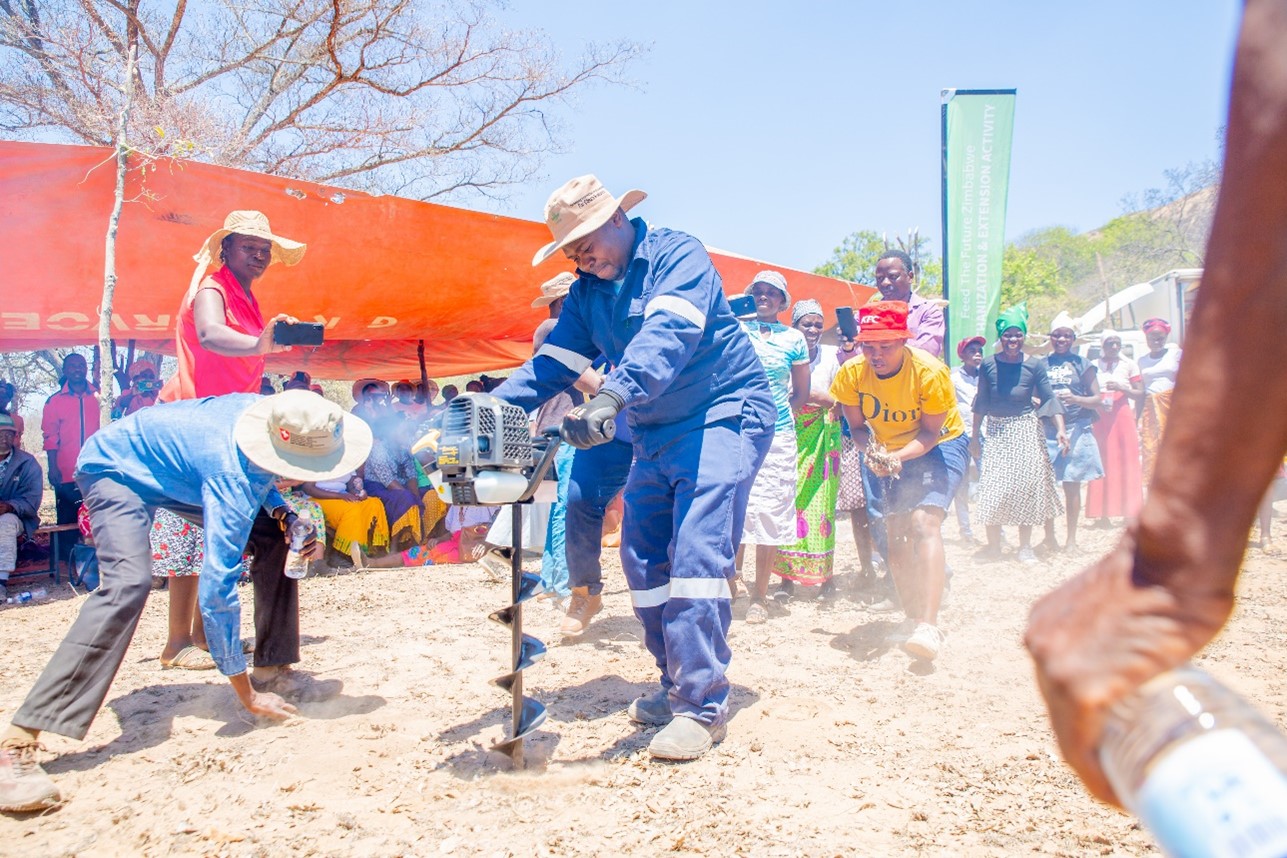
The joint participation of the USAID funded ‘Feed the Future Zimbabwe Mechanization and Extension activity’, helped to emphasize the importance of transforming smallholder agriculture through scale-appropriate equipment. At the event, machinery manufacturers such as Prochoice, Kurima and Mahindra showcased cutting-edge machinery, designed to ease farming operations. These companies showed live demonstrations of two-wheel tractors, basin diggers, multiple crop threshers amongst others, effectively emphasizing the benefits of scale-appropriate mechanization. The innovations on display demonstrated the unwavering dedication of the private sector towards supporting farmers and driving agricultural innovation. “It has been a truly exciting opportunity operating the peanut sheller, while appreciating the different machinery in live action. I will consider buying this machine as it reduces the added burden of shelling and processing,” said Lungiwe Nyathi, a local farmer from Mwenezi.
Partnerships for growth
Various seed companies, including AgriSeeds, SeedCo, Farm and City, Super Fert, National Tested Seeds, Intaba Trading, Sesame for Life and K2, marketed appropriate seed varieties that ensure bumper harvests. Sales of seed, fertilizer and other inputs were high, with the total value of sales reaching US6,450. Vouchers were distributed to farmers who made high cash purchases of seeds. “I bought 45kgs of seed which I believe is a great start, and I am happy that I do not have to pay extra money for transporting the seed to my home,” said Martha Chiwawo, a farmer from ward 16 in Masvingo.
The fairs would not be complete without CIMMYT partners. While Zambuko Livelihoods Initiative shared their expertise in the district, SNV has been encouraging sustainable savings and lending schemes among farmers to purchase machinery while facilitating market access and reducing post-harvest losses. The World Food Programme (WFP) encouraged farmers to become resilient and self-sufficient through valuable knowledge and skills to improve their lives. In addition, the Mwenezi Development Training Centre (MDTC) focused on encouraging small livestock which are adaptable to the area. Additional partners Cesvi and Sesame for Life, who both operate in ward 6 of Mwenezi district, participated in the seed fairs for the first time. Both partners advance the production of high value crops—paprika and sesame—which have a ready export market and favorable prices for smallholder farmers. Government extension departments showed strong support while researchers from the Makoholi Research Station in Masvingo used the opportunity to talk to farmers about their research initiatives.
As the day came to an end, farmers were brimming with excitement and ready to embark on the season ahead with purchased, improved seed and a wealth of knowledge on innovative conservation agriculture practices. The event proved to be an invaluable opportunity for uniting farmers, government, seed companies, and partners in a shared mission to promote sustainable farming practices and ensure food security.
Delivering the best seeds to farmers in Zambia
To bring together farmers with seed distributors and other stakeholders, the Southern Africa Accelerated Innovation Delivery Initiative (AID-I) Rapid Delivery Hub, or MasAgro Africa, held a seed fair with the theme ‘Promoting Access to Drought Tolerant Seed and Appropriate Scale Technologies,’ in Zambia’s Chongwe district. The objectives of the fair were to create a platform for farmers and input suppliers to engage before the onset of the planting season. Over 1,200 farmers attended the seed fair.
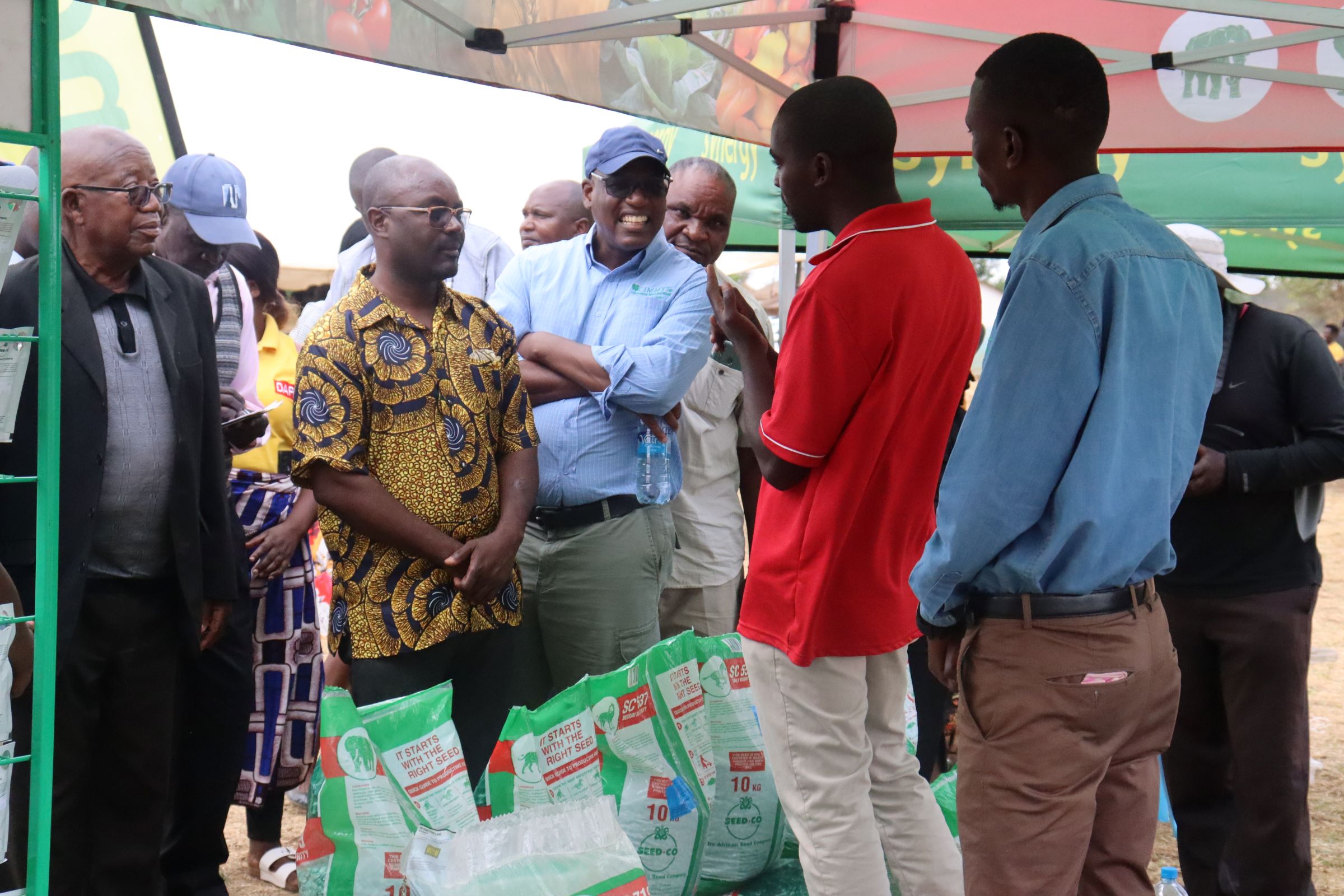
“The seed fair plays a critical role in linking farmers to seed companies and exposes them to appropriate technologies. The links created with agro-dealers and other suppliers ensure farmers gain access to sufficient volumes of appropriate multiple stress tolerant maize hybrids, legume seed and agricultural inputs locally. Access to drought tolerant seed and technology in the times of climate change is timely and critical to today’s farmers. This fair will help our farmers acquire inputs at their doorsteps, promoting food security,” said Kasuba, the district agriculture officer.
AID-I is also using these fairs to provide information on agronomic practices such as conservation agriculture, climate-smart agriculture and small mechanization options to support smallholders not only to learn but also enjoy the events through participation in fun quizzes. Farmers purchase seed and other inputs when they redeem vouchers provided by participating companies who develop the questions for farmers.
A farmer who redeemed a voucher said, “I came from Nyimba, because I heard that there is a seed fair here. What I found was very interesting, and I learned a lot. I saw a lot of seeds from different companies. I have also managed to win this pesticide by answering a question, and I am very happy about this project.”
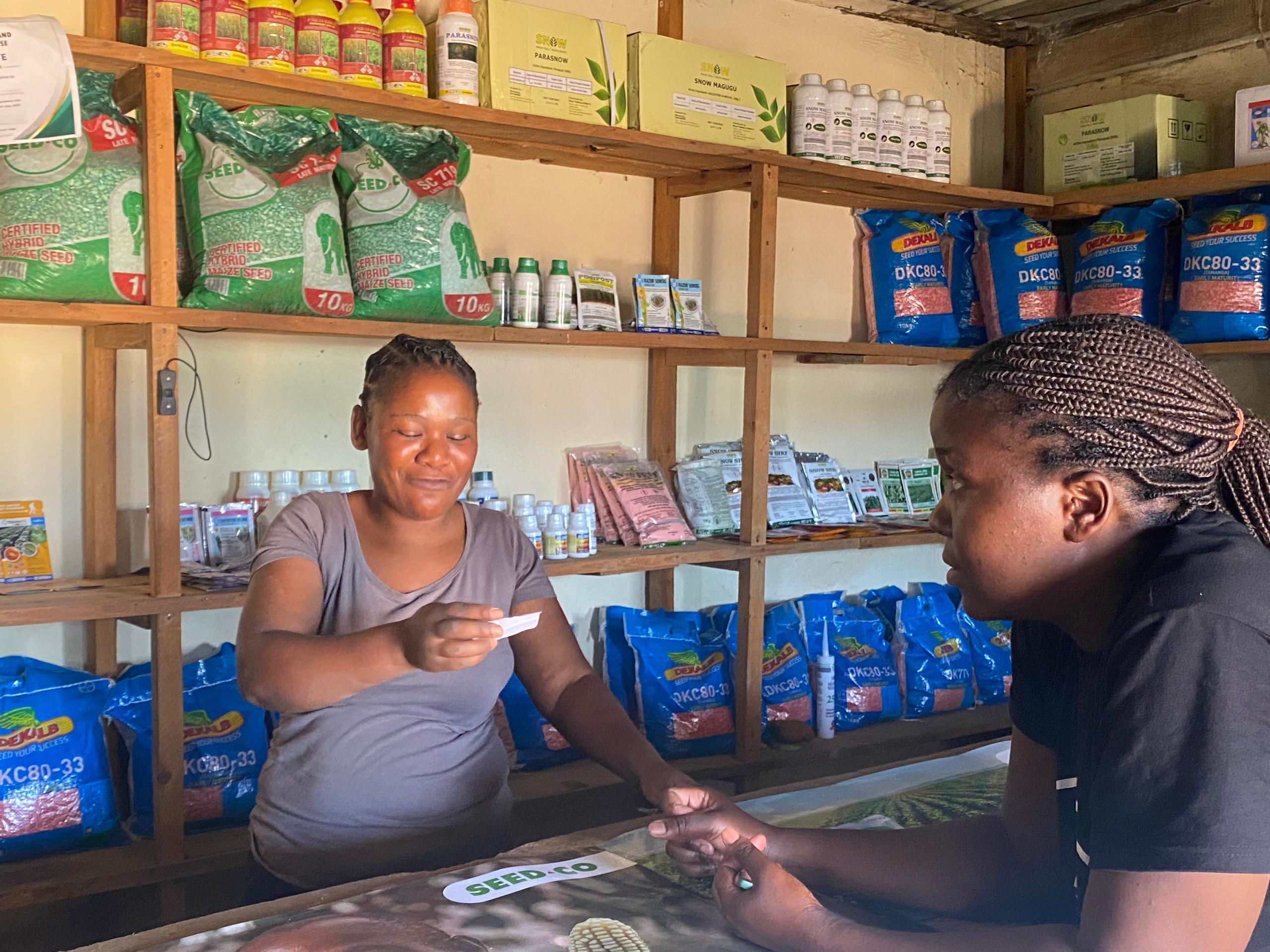
These add-ons to the seed fair ensure farmers learn about climate-smart practices and how they can mitigate climate change effects and crop damage caused by pests by using drought and pest resistant varieties. Pests such as fall armyworm (FAW) are a major threat to smallholder farmers and their crops, as these can destroy crops and lead to a significant decrease in yields and income for the farmer.
Some of the outcomes and benefits for the private sector, and farmers alike include farmers to access different seed hybrids at one location, reduced costs of transportation for farmers who often travel long distances to get inputs. Zamseed, an AID-I partner, was able to promote 600 packs of their ZMS 451-medium and ZMS 721-late maturity seeds. SeedCo, another AID-I partner was able to support farmers with 500 seed packs of their medium maturity SC 303-ultra early, SC 555-early and 657-medium maturity maize seed varieties to farmers. Seed input suppliers noted that maize seed packed in smaller bags weighing 10 kgs and of medium maturity variety seed were the most sought-after and have now influenced how they can reach much larger numbers of smallholder farmers through this observation on improved packaging and demand.
In addition to Zamseed and SeedCo, AID-I partners who participated in the seed fair include the Ministry of Agriculture, CRS, Afriseed, Synergy, Animive Enterprises, Bayer, Amiran, Syngenta, Omnia Fertilizer, and Corteva.
CGIAR Initiative on Diversification in East and Southern Africa
East and Southern Africa is a climate hotspot, with more than US$45 billion in agricultural production at risk from higher temperatures, shorter growing seasons and more extreme droughts and floods. Maize, a staple crop covering up to 75% of cropland in parts of the region, is particularly vulnerable and is projected to face yield declines of 15%, among other climate impacts if no adaptation measures are taken. Many of the affected areas already have serious levels of hunger and malnutrition, with the highest burden experienced by women and youth from marginalized and vulnerable communities. If these systems are sustainably diversified, they can contribute to stabilizing regional and global agrifood systems.
The next decade will be critical for strengthening food, land and water systems in East and Southern Africa. The agribusiness ecosystem for both regions has been identified as a critical engine for agricultural and economic development, climate change adaptation and gender and youth empowerment. Investment in innovation, capabilities and supportive environments will be essential for driving sustainable growth.
Objective
This Initiative aims to support climate-resilient agriculture and livelihoods in 12 countries in East and Southern Africa by helping millions of smallholders intensify, diversify and reduce the risks in maize-based farming through improved extension services, small and medium enterprise development, supporting governance frameworks and increased investment with a gender and social inclusion lens.
Activities
This objective will be achieved through:
- Diversifying and sustainably intensifying production by assessing needs and options for the introduction of crops, livestock, mechanization and irrigation, applying innovations in value chains and building capacity while scaling to larger farming communities.
- Reducing risk and digitalizing value chains by co-designing and delivering “Innovation Package” bundles of digital agro-advisory systems and research management products — including mobile apps, TV programs and social media — to build resilience and improve productivity.
- Supporting and accelerating value chain business enablers in maize mixed systems by using CGIAR’s expertise and partner network to unlock access to funding, investment and tailored technical assistance.
- Promoting the governing and enabling of multifunctional landscapes for sustainable diversification and intensification with a focus on strengthening the evidence base for decision-makers.
- Empowering and engaging women and youth in agribusiness ecosystems by mapping challenges and opportunities to address gender and social inequality and applying inclusive and coordinated interventions for transformative change.
- Scaling innovations and coordinating CGIAR and partner activities in the region through a scaling hub that uses the “scaling readiness” approach to inform, activate and bring to scale innovations that respond to regional or country demand.
Resilience Building through agroecological intensification in Zimbabwe (RAIZ)
Zimbabwe’s agricultural sector is predominantly subsistence-oriented, with maize as the main staple crop and limited use of external inputs. To promote sustainable and climate-smart agriculture, Zimbabwe has developed a 10-year framework (2018-2028) that emphasizes the adoption of climate-smart agriculture (CSA). However, the adoption of CSA practices remains limited in the country. Agroecological practices (AE) and the systemic perspective embedded in agroecological approaches hold great potential to address climate change and enhance agricultural sustainable intensification in Zimbabwe. RAIZ was conceived as the research component of the “Team Europe Initiative” (TEI) on “Climate-Smart Agriculture for Resilience Building”, formulated by the European Union (EU) delegation in Zimbabwe together with its member states.
Led by the French Agricultural Research Centre for International Development (CIRAD), in partnership with CIMMYT and the University of Zimbabwe, with funding from the European Union, RAIZ operates along a gradient of declining rainfall from Murewa in Natural Region II to Mutoko in Natural Region IV. Both districts are in the Mashonaland East province. Under RAIZ, CIMMYT leads Work Package 3 which involves ‘developing the capacity of extension and advisory services on agroecological approaches’ is actively involved in research and development activities, including the creation of training materials and the establishment of on-farm trials. In efforts to address challenges associated with low soil fertility on Zimbabwe’s granitic sandy soils. CIMMYT scientists working on RAIZ are testing the contribution of organic fertilizers and conservation agriculture in building up soil organic carbon and bringing back soil life to these mostly dead soils. These efforts aim to support farmers in adopting sustainable and climate-smart agricultural practices, ultimately contributing to the long-term resilience and prosperity of Zimbabwe’s agricultural sector.
Key objectives
The overall objective is to support government in the development and implementation of scientifically tested agroecological approaches which will enhance agricultural production and resilience to climate change in Zimbabwe.
In addition, the project focuses on protecting the environment and reducing greenhouse gas (GHG) emissions. It will provide scientific evidence and experience for the design of climate-smart agriculture (CSA) at the plot, farm, and landscape levels, contextualized for mixed crop–livestock farms under sub-humid to semi-arid environments.
CIMMYT announces 2030 Strategy
The world’s food systems are under threat by escalating armed conflicts, economic stagnation, the effects of the climate crisis and natural resource degradation. Against this backdrop, the next seven years are crucial in meeting the challenges of keeping the world’s growing population fed and secure.
Recognizing that business as usual will not be sufficient, CIMMYT has embarked on a journey to proactively face the new challenges of the 21st century. This novel approach to agrifood systems is the core of CIMMYT’s 2030 Strategy, which has the potential to shape the future of agriculture.

“We understand that the challenges facing food security are complex, varied and rapidly changing. For instance, the effects of COVID-19 and Ukraine-Russia conflict on food systems are still being felt today. With that in mind, we set out to develop a strategy that is both robust and nimble. The best way to create a sustainable and inclusive strategy was to engage directly with CIMMYT scientists and staff, the people on the front lines of this effort to deliver food and nutrition security to the world,” said CIMMYT Director General Bram Govaerts.
Looking back to move forward
The first step in crafting the 2030 Strategy was looking at where does CIMMYT want the world to be in 2100. In answering this question, CIMMYT crafted a long-term vision of how it wants to engage in a changing world and achieve the transformation to a food and nutrition secure world within planetary boundaries. CIMMYT has integrated the use of foresight and specifically a set of 2030 Food and Agriculture scenarios to explore potential changes in intervention areas over the strategic period and help prepare engagements in different contexts across the globe. These scenarios are a decision-making tool that has underpinned the development of the strategy to ensure that it is context-driven and focused on the most pressing challenges facing the agrifood systems in which CIMMYT operates.
From the future CIMMYT looks back at its history and examines how its core business has evolved over the years to proactively meet ever-changing needs across the world.
At each stage of CIMMYT’s evolution, it has taken its strengths and the skills it has built and added to its experience, and expanded on what it delivers while maintaining the core strengths.
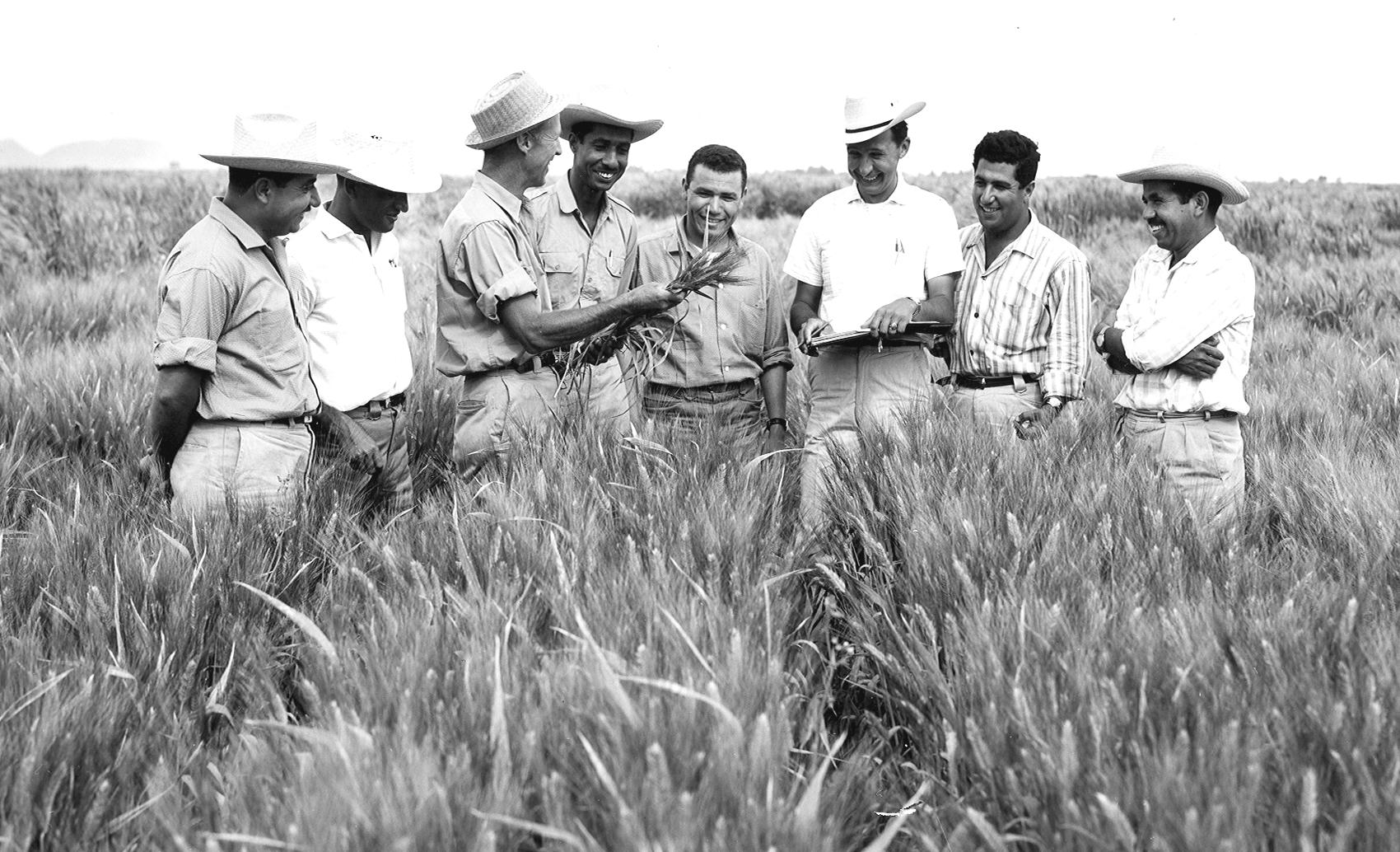
In CIMMYT’s earliest days, the mission was developing and improving germplasm and agronomic practices, then CIMMYT began working more closely with farmers (1980s), broadened emphasis in genetic improvements (2000), embarked on sustainable multidisciplinary projects (2010s), and most recently, advancing technologies in participatory innovation systems (2015-2022). All leading to the mission codified in the 2030 Strategy: accelerating food systems transformation by using the power of collective action.
Now, in 2023, CIMMYT’s progress is being shaped by the CGIAR mission statement: “To deliver science and innovation that advance the transformation of food, land, and water systems in a climate crisis.”
Building the Strategy
To define the 2030 Strategy, CIMMYT responded to the following core questions:
- What does success look like?
- Where can CIMMYT deliver the most value?
- How can CIMMYT deliver value for communities?
“As an organization, we have concentrated on strategies that foster collaboration and adapt them for a non-profit international organization whose vision is not to grow as an institution but to deliver greater value for the communities they serve, to innovate for the end users of their products and to ensure a better future for our global community,” said Govaerts.
The tools used to develop the elements of this strategic plan leveraged the framework provided in the CGIAR Research and Innovation Strategy to guide the process. Staff from across the Center engaged in a consultative process to develop the objectives for following strategic components: Excellence in Science and Innovation, Excellence in Operations, Talent Management, Resource Mobilization, Partnership, and Influence.
Developing the Excellence in Science and Innovation component serves as an example of this collaborative, bottom-up approach. Planning was led by the Emerging Thought Leaders Group, made up of 24 early and mid-career scientists across the breadth of CIMMYT’s global and program portfolio. The group worked collaboratively with CIMMYT researchers and staff to first delineate the challenges facing agri-food systems and then workshopped solutions which now serve as the foundation of the 2030 Strategy.
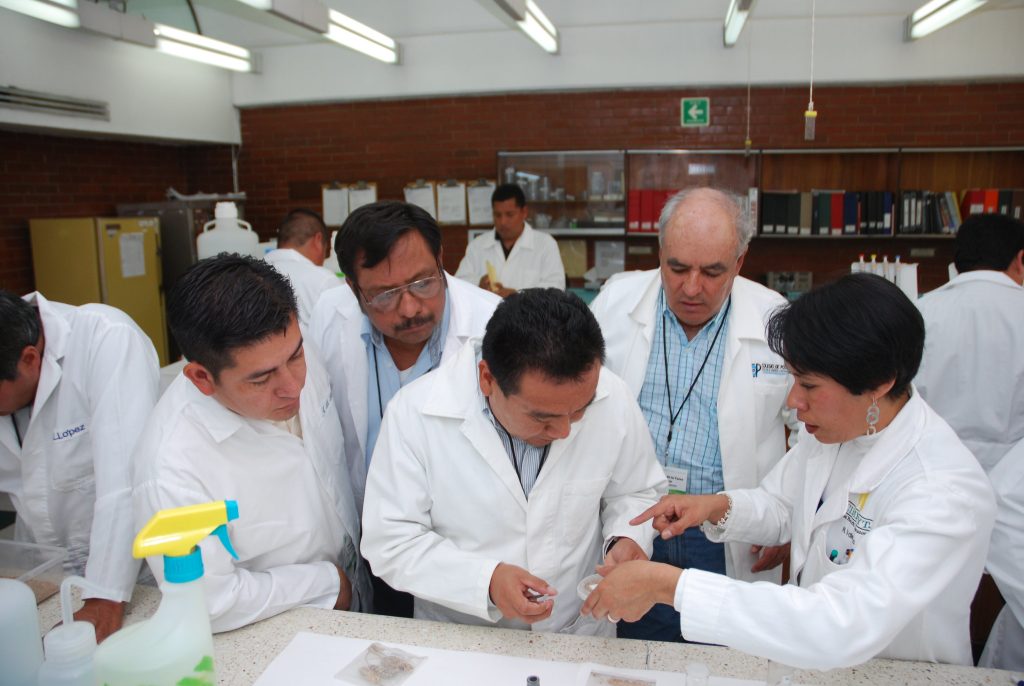
“Each component complements the others,” said Govaerts. “This is our answer to the core questions. Only by working collectively can we initiate sustainable solutions that reach everyone.”
Together, the components create a network to support CIMMYT’s three pillars: Discovery (research and innovation), SystemDev (working collaboratively to innovate foundational systems), and Inc. (incubating startups and new ways of doing business in the agri-food system space).
CIMMYT is leading the way in shaping a sustainable and prosperous agricultural landscape
The goal to facilitate food security where sustainable agriculture is part of the solution to the climate crisis and agriculture provides an avenue to build household resilience and enables communities to pull themselves out of poverty requires the strategic use of resources. CIMMYT’s 2030 Strategy, built from the bottom up on a foundation over 50 years’ experience and the expertise of scientists, staff, and farmers maximizes resources, enhances dynamic partnerships, and both retains and recruits a world-class staff in a world of growing challenges to food security.
Read the 2030 Strategy: Science and Innovation for a Food and Nutrition Secure World: CIMMYT’s 2030 Strategy

